|
I wrote the original post back in November, and I shared the update on my vlog. At the end, I predicted where I would be at the end of February. Today is March 13, and here’s where I am on my journey to tell the story of the men who signed the Declaration of Independence. Part 1 – Where I Was: I believe you need to know where you were, to take stock of where you are. It also allows you to see progress, and that’s a good thing. The original post went live on November 20. I was on Chapter 17, and I was writing about Ben Franklin. Oh My Goodness! I remember that chapter – not in a good way! It took me 3 weeks to find my way in. If you’d like to read the original post, here’s my link: http://www.rindabeach.com/blog/me-and-my-middle-grade-novel-where-am-i-now My vlog went live on January 28. I finished Chapter 21 with Francis Hopkinson that week. If you’d like to listen, here’s the link: https://www.facebook.com/watch/?v=2796790403792630 Part 2 – Where Am I Now? This week I finished Chapter 30. Only 27 chapters to go 😊 And the signer – Carter Braxton from Virginia. I’d never heard of him, but now I won’t forget him either. His mother died after she’d given birth to two baby boys. He was her second son. Carter married young like his father, and his wife died after she’d given birth to two baby girls. Heartbreaking. But he married again. She gave birth to ten boys and six more girls. Eighteen – that’s a lot of children! Milestones from my Journey : Chapter 19 = a third of the way to the end. Chapters 28 = halfway done. I celebrated both milestones with a tiny bit of shopping. It makes a memory and keeps me moving. Chapter 38 = two thirds of the way to the end. That’s seven chapters or seven weeks from now, I hope. Story Stats – 29 founders, dead Two states with all its signers dead – North Carolina (3) and New Jersey (5) The state with only one death – Massachusetts. The signer, John Hancock Part 3 –My Conclusions and How They're Working: Back on July 17 of 2023, I wrote a post about failing. I even thought about quitting. Back then I was struggling with Stephen Hopkins from Chapter 12. Here are my conclusions after a week of struggle, plus the answer to the postscript – how my conclusions are working. 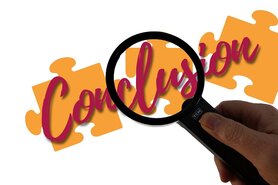 1. It’s OK to fail. Sometimes you need to stop and make a new plan. The last time I failed/got stuck was on Chapter 17 with Ben Franklin. 2. Change when you need to. When I get stuck, I should take a break. I need fun and family too. I still take breaks when I need to. But after Chapter 17, I found a new technique. I haven’t missed a deadline since then 😊 3. When I get stuck, I should step back. Later I’ll see how to edit and revise. I don’t need to step back with my new strategy. At least so far 😊 4. Each chapter feels like I’m climbing some steep hills. I need to write at this story’s speed. Sometimes that’s fast, and the story just flows. Other times it’s slow or no-speed at all. That’s when my ideas need time to develop. I still feel like I’m climbing steep hills, especially at the beginning, but my new technique makes it easier to climb that first one. Then the story usually flows along. Sometimes I find a steep hill near the end, but the strategy works there too 😊 Post Link: http://www.rindabeach.com/blog/when-you-feel-like-quitting-inspiring-quotes-for-you-and-me Vlog: https://www.facebook.com/watch/?v=6554628911271624 Part 4 – Three New Strategies: How did I find them? The old-fashioned way – trial and error – until I find what works. For today. When they stop working – I go back to my drawing board.  1. Finding my way through research – I’m much faster than I used to be. I look for three internet sources for each signer, then what was going on just before his death, and finally what Charley and his family were up to. Sometimes I find my way into the chapter from it, but a lot of times, I don’t. 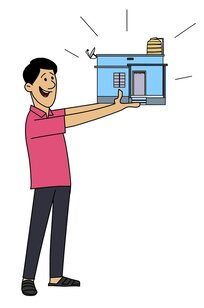 2. I write less – but not on the chapter of the week. I still write all day, taking breaks when I need to get up, until about 8PM. Sometimes just getting up and moving around will get me unstuck. And, so far I’m staying on track, writing a chapter a week. The less, that’s on my blog. I realized over the summer, when I thought about quitting, something had to give, and it couldn’t be me. So, now I write a blog section in two days. The first day I put up pictures and outline what I want to write. The second day I write and revise that section. If life gets in the way, and occasionally it does, I give myself a day of grace. Less is also on my vlog. I’m doing more classic posts. LOL, it’s just another way of saying an old one. I also look for blogs, beyond the original one, but they need to add to the vlog’s topic.  3. This is the BIG ONE! I write questions to Charley (Charles Carroll), and I answer them. After spending the last year and a half with him, I know him pretty well. This week I’m working on Oliver Wolcott. I’d never heard of him either. He was the governor of Connecticut in 1797, and a Major General in the Continental Army. He was one of the heroes of Saratoga, one of the first big wins for Washington’s army, but – that didn’t help me figure out how to write Chapter 31. What did? Questions! I started with ‘Where is Charley?’ and ‘What is he doing?’ Sometimes that works. Sometimes I have to ask more questions. I knew Oliver died on December 1, and Charley would have been in the Maryland Senate. So I asked what he might have been doing. That was a dead end, but it’s part of the process. Then I asked the question, and I hit pay dirt! I asked what Charley was doing at Christmas time. I got the answer the next morning. I realized I’d already written something about a priest visiting him. I don’t know if one really did, but it fits my research. Charley’s cousin was the first Catholic bishop in the US, and he started St. Mary's College and Seminary in Baltimore. The priest had to visit, because there were no Catholic Churches in Annapolis. Not yet. The first one was built next door to Charley’s house. BINGO! I started writing, and I finished the WHOLE rough draft in one day. I even started my first round of revision. I didn’t finish – I needed to write this part of the blog for you. If I hadn’t found my way into the chapter – I would have asked Charley more questions, until I found it. I know when I have a good answer, because I can keep writing. Even when I question the last paragraph I wrote. When that happens, I take a break, AND I can push past it. Part 5 – My New Middle Grade Goals: 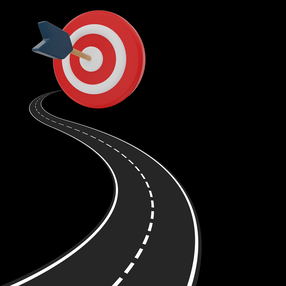 The next one – to finish Chapter 36 by May 3rd. That’s the first Friday in May. My critique group is taking Good Friday off. Then I'll return to my usual pace – a chapter a week – to research, write and revise. It’s the fastest I’ve ever written, and the most I’ve written in years. I have another goal that’s on the back burner. I’m moving as quickly as I can, but the other chapters come first. My second goal is to polish the first 3 chapters until they’re submission ready. It’s a work in progress.
2 Comments
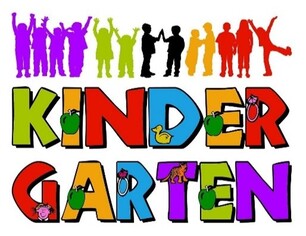 Spring is coming, and so is Kindergarten screening. It’s still a few months away. If you want to do a little prepping, here are five ideas for you and your child. They came from the UK. I modified them to fit American parents and kids. Link: The 5 Skills You Should Actually Teach Your Child Before They Start School (msn.com) #1. Talking: In the US, I’d expand this into the language arts. 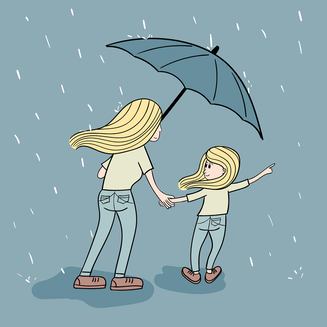 - Think speaking. Talk to your kids, ask them questions, sing and do nursery rhymes. - Think listening. Can your kids listen to a story or follow directions? Maybe with one step or two? Maybe more! (2 step example – jump twice, then stop.) - Think reading. Read a book with your kids. Picture or Board book, it doesn’t matter. Let your kids read to you. It doesn’t have to match the real text. That’s how littles start reading – by retelling a favorite story. You can do the same thing with television. Watch, then talk about it. You’re still using all of those great skills. - Think writing. It can be as simple as drawing a picture or writing their name. That’s how littles start. They’ll let you know if/when they’re ready for more. PS – Save a drawing from time to time, maybe once a month. They’ll show how your child’s fine motor skills are growing and developing. #2. Independence: This is the same set of skills whether you live in the UK or the US. The more independent your child is, the more successful they’ll be. 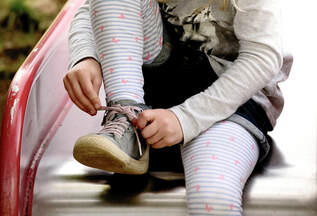 - Think separating. Can you leave your child and know they’ll be fine? During screening another educator will take your child to assess their strengths and weaknesses. They can’t get an accurate picture if you’re there. The school will set up classrooms that fit your child and their classmates based on that screening. - Think bathroom skills. Kids are expected to go by themselves. They need to wipe, wash, and dry their hands. Knowing how to get a paper towel is helpful. I remember watching Kindergarten teachers and students that first week. There’s a lot of life skills being learned and practiced. - Think lunch. Can your child eat by themselves? Open packages of ketchup or use a spork to spread butter. An adult’s around to help, but the more your child can do, the better. That first week of school your child will learn to carry their tray to the table. Afterwards they’ll drop off trash or things to wash. Every day that first week I gave thanks for kindergarten teachers. By the third week, those kids looked like pros! - Think clothing. Can your child put on a coat? Zip or button it? Can they tie their shoes, or pack their bookbag to go home? Teaching them how to get dressed is a good thing! So is independence. #3. Numbers: It’s more than 2 + 2, even in kindergarten. It’s not algebra or geometry, but the foundations for math begin in kindergarten.  - Think number sense. Can your child count to 10? To 20? If that’s simple, keep going. Maybe your kiddo can make it to 100! Do they know that 2 cookies are less than 4? Could they figure out if you have 4 cookies and give 2 away, how many are left? You could try this at your kitchen table or at the store. Any time you use math, let your child use it with you. - Think geometry with shapes. Can your child recognize triangles, circles, and other 2D shapes? Can they recognize 3D ones like spheres, cylinders, and cones? When you find those shapes in real life, talk to your child. - Think patterns, basic AB ones. You can build from there. You might start with circle, square, circle. Then ask what comes next. If your little doesn’t know, it’s an opportunity to learn something new. If you see patterns around the house, around the store, ask your child to look for them. - Think measurement. Start with more/less, heavier/lighter, and go from there. Talk about units at the grocery store – pounds, gallons, etc. Let them use a scale, like the one in the bathroom. The UK post said to bake with your child and let them do the measuring. If there’s a spill, they can learn to clean it up too 😊 #4. Concentration: It’s more than focusing and finishing a task. It’s also about changing gears. It’s about learning how to do things when your teacher tells you. 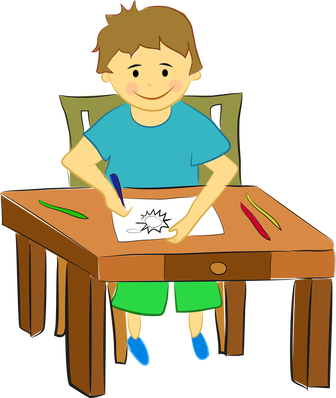 - Think listening to directions, then following them. Play a game with your child, or ask them to help you. They’re using those same skills. - Think movement. You can’t just get up and move around. You listen to your teacher. Try a game like Simon Says with your kiddo. - Think bathroom. You listen to your teacher too. Think of car rides. Your child has used this skill. - Think stopping and starting when your teacher tells you to. Sometimes you don’t get to finish what you’re doing. Watch how your child handles this at home and help them shift those gears. - Think about the other kids in the class who are doing activities too. If your child is in preschool or any other kind of class, take a look at how they’re handling those interactions. - The original post suggested things like sticker books, puzzles, activity books, and coloring. Don’t forget group activities like story hour for your child. #5. Play: This is the heart of childhood. Kids learn by playing – from finding their fingers and toes to stacking blocks. 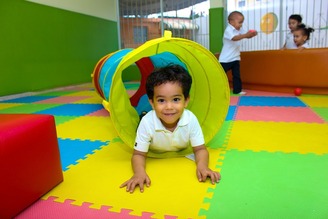 - Think open-ended play where your child directs the action, with real things or with their imagination. - Think materials – like paper towel tubes, clay, and boxes. Or toys like blocks, costumes, and balls. The opportunities are endless, and so is the fun.  Do you have parents or grandparents who need to look for a new home? I’m happy to share this guest blog from Kent Elliot AtHomeAging.info. Keep reading – he has seven great tips to help seniors find the house that fits them now. The journey into retirement marks a pivotal phase in life, demanding a living space that transcends the ordinary, blending comfort, safety, and convenience. This stage requires careful consideration of certain key features in a home, ensuring it not only meets your present needs but also gracefully adapts to your evolving lifestyle in the years ahead. This comprehensive guide, courtesy of Rinda Beach, aims to illuminate those vital characteristics that make a home ideal for your retirement years. Part 1: Embracing Open and Accessible Spaces In your search for the perfect retirement residence, prioritize homes that boast open, barrier-free floor plans. These designs are more than just modern and visually appealing; they are practical, enhancing mobility and reducing the risk of accidents. An open floor plan facilitates easier navigation, particularly important as mobility concerns increase with age. Additionally, these spaces foster a warm, inviting atmosphere, ideal for hosting family gatherings and maintaining an active social life, which is essential for mental and emotional well-being during retirement. Part 2: Accessibility with Wheelchair-Adapted Entrances 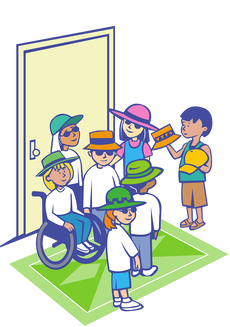 For retirees who use wheelchairs or other mobility aids, the presence of wheelchair-friendly ramps and wide doorways is a critical feature. These adaptations are not merely conveniences; they are essential for maintaining independence and ensuring safe access around your home. Homes equipped with these features underscore a commitment to accessibility and inclusivity, vital for a comfortable and dignified retirement life. Part 3: Assurance Through Home Warranty Protection When downsizing, it’s important to consider your insurance options. While homeowner’s insurance covers damage to the structure, injuries, and theft, it doesn’t cover appliances or major systems. That’s why you should work with a home warranty company to find a policy that works for you. These warranties are crucial for safeguarding against unexpected repairs and maintenance issues, particularly for essential home systems like heating, cooling, and plumbing. With such protections in place, you can spend your retirement years enjoying your home without the concern of potential unforeseen expenses and the hassles of home repairs. Part 4: Enhanced Living with Intelligent Home Systems In the modern age, homes equipped with smart technology offer significant advantages, especially for retirees. Look for properties that feature intelligent home systems, such as automated thermostats, lighting controls, and advanced security systems. These technologies not only provide unparalleled convenience but also enhance safety and independence. The ability to control various aspects of your home environment with simplicity and ease can significantly improve your quality of life, allowing you to focus on enjoying your retirement rather than being bogged down by mundane tasks. 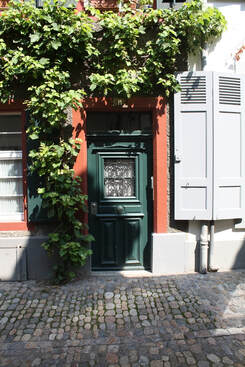 Part 5: Seamless and Safe Access The entrance to your home should be more than just aesthetically pleasing; it should be designed with safety and accessibility in mind. Homes with step-free entryways are crucial for preventing trips and falls, common concerns as one ages. Such design considerations ensure that your home remains accessible, safe, and welcoming, regardless of any mobility challenges you or your visitors might face. Part 6: Safe and Comfortable Bathing Solutions  Bathroom safety is paramount, making accessible walk-in showers a must-have in your retirement home. These showers–along with grab bars and corner protectors–are designed to help provide safer and more comfortable bathing experiences. They minimize the risk of slips and falls, a significant concern for seniors, and provide the convenience necessary for maintaining personal hygiene independently and with dignity. Part 7: Ease of Access with Ergonomic Handles 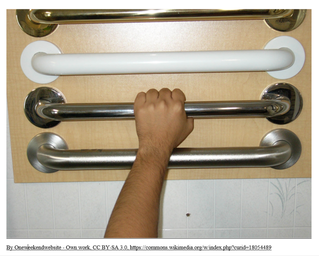 The usability of a home extends to the smallest details, like door and faucet handles. In your retirement home, look for ergonomic lever-style handles, which are far more user-friendly than traditional knobs, especially for those with arthritis or limited hand strength. Such thoughtful details in a home's design can make a substantial difference in your day-to-day life, ensuring that every aspect of your home is accessible and easy to navigate. Final Thoughts Selecting the right home for your retirement is a decision that encompasses much more than just the property's location or aesthetic appeal. It's about finding a space that ensures your comfort, safety, and independence in the years to come. By focusing on these essential features, you ensure that your chosen home is not just a dwelling, but a sanctuary that supports and enriches your life throughout your retirement. For more information, check out Kent Elliot of AtHomeAging.info
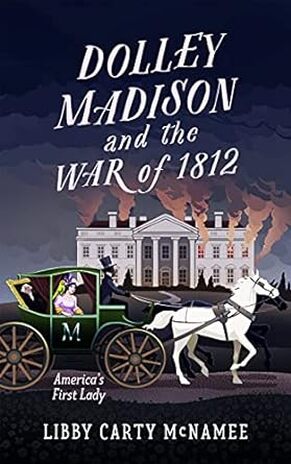 2/15/24 I was looking for another mentor book for my middle grade novel. This one skips me ahead to 1809, and to a lot of surprises. Here are the six that caught my attention. 1. Some things haven’t changed – the fighting between the two political parties. Back then it was the federalists and the antifederalists. Thomas Jefferson and James Madison were happy to serve as the 3rd and 4th presidents, but they were also glad to leave Washington and their federalist critics behind. 2. Washington City in 1809 was a mess. It was more backwater swamp than a capital city. It had sidewalks, but if you took the wrong step, you’d have muddy shoes. The president’s house was a shell without furniture, so Dolley invited a few key federalists inside and wrangled $5000 out of them. It was enough to decorate the public rooms. 3. Dolley used those rooms to bring people together from both parties, from different social classes. She thought mixing people together would help them to talk, and to work together. Her gatherings were so popular they were called squeezes. Can you guess why?! 4. The war went badly for the Americans who didn’t even have a standing army. The antifederalist Jefferson got rid of it. The redcoats took advantage and burned down the capital. Madison told Dolley what to save, like the Constitution and the Declaration, but not her dresses or turbans. They both wanted our most important documents in American hands. But Dolley saved one thing that wasn’t on the list, Washington’s portrait. She didn’t carry it out – she had it chopped out of its frame and stored away. They didn’t roll it up either– that would have cracked the paint and ruined it. 5. The war finally ended when Andrew Jackson overwhelmingly beat the British in New Orleans. The redcoats called his men dirty shirts, scum of the earth, and mismatched misfits. The battle ended in 30 minutes, with only 500 redcoats left. They started with 3000. I’m glad those mismatched misfits took care of business and saved our country. 6. After the burning of Washington, Congress made a few attempts to move our capital. Thank goodness they failed. I’m glad our capital is still named after the Father of our Country. Amazon’s Description: DOLLEY MADISON UNITES YOUNG AMERICA! Amidst the nonstop turmoil of the War of 1812, the decisive First Lady takes action and inspires an anxious nation. Dolley Madison faces a bitterly divided Washington City when her husband, James Madison, becomes our fourth president. The prospect of war against Great Britain threatens to tear our fragile republic apart. The "Presidentess" hosts open parties in the new President's House to unite political foes and cultivate an American identity. When President Madison declares war with disastrous results, Dolley carries on, ignoring the threats against her. However, as British soldiers march toward Washington City, she becomes their target. Now America's Second War of Independence hinges on her. What must she do to save the United States while also saving herself? The true story of a woman with humble Quaker roots who rallies America during the War of 1812! 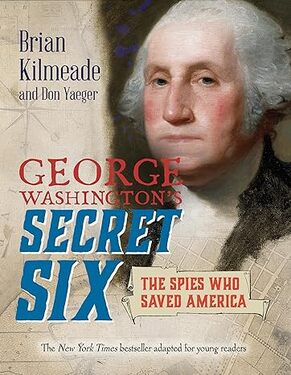 1/17/24 I’d never heard of the Culper Spy Ring until a writing friend said to check out the TV series “Turn.” I couldn’t, I don’t have that network, and I refused to buy it. Instead, I bought this book by Brian Kilmeade and Don Yaeger. It’s a nonfiction middle grade, not a thriller. But I was fascinated by the idea that George Washington would have actually set up a spy ring, and that he was once a spy himself. The details are fascinating! Here are the four I remembered. 1. Nathan Hale probably never said, “I regret I have but one life to give to my country.” Poor Hale, he was young and in love with the idea of being a spy. He went into New York a week or two after school started, too late. His cover – he was a schoolmaster. He was caught and hanged within a week or two. Hale could be linked to the quote, but there’s no proof he really said it. If there was, it would be in this book . . . it’s nonfiction. 2. There are paintings throughout this book. They give you a picture of what life might have looked like during the Revolution. Unfortunately, most were painted years later. That’s when small details get lost. One of the first examples is John Trumbull’s famous painting of the Declaration of Independence. Some people think it’s the actual signing, but it’s really the Committee of Five presenting their draft to the Second Continental Congress. You’ll find lots of other examples in this book. 3. Agent 355 – She was a real spy, but no one knows her true identity. Fascinating! In this book, the authors speculate that she ran in high circles with people like British Major John Andre. After he was captured with the plans from West Point from Benedict Arnold, Agent 355 disappeared. Some people think she was caught and imprisoned on one of the British prison ships sitting in New York harbor. No one knows if she lived or died. If you’d like to read what the Smithsonian thinks, click on this link: Who Was Agent 355? | History| Smithsonian Magazine 4. General Washington never recaptured New York, but the spy ring continued to operate all through the war. Even when the British took the war south to Georgia and the Carolinas. I was surprised to learn Washington gave the British fake information that he was nearby, with 2000 men. In reality, he left them there as a decoy. Most of the Continental Army was on a fast march south to Virginia. The cover helped them surprise the British at Yorktown, and that led to the end of the war. Amazon’s Description: A page-turning middle-grade adaptation of the New York Times bestseller about George Washington's top-secret spy ring that helped defeat the British. The American Revolution is well under way in 1776, but things are looking bleak for General George Washington and his Continental Army. With Washington's hasty retreat from New York City in August, many think the war might soon be over. After all: how on earth is this ragtag group going to defeat its enemy, the well-trained and well-funded military of the largest empire in history? But Washington soon realizes he can't win with military might. Instead, he must outsmart the British, so he creates a sophisticated intelligence network: the top-secret Culper Spy Ring. Drawing on extensive research, Brian Kilmeade and Don Yaeger tell the fascinating stories of these long unrecognized spies: a reserved merchant, a tavern keeper, a brash young longshoreman, a curmudgeonly Long Island bachelor, a coffeehouse owner, and a mysterious woman. This vivid and accessible young readers adaptation of the New York Times bestseller features an exclusive new introduction, extensive back matter, and eye-catching art throughout. Chronicling a crucial moment in American history, this historical thriller will excite and inspire the next generation of patriots. 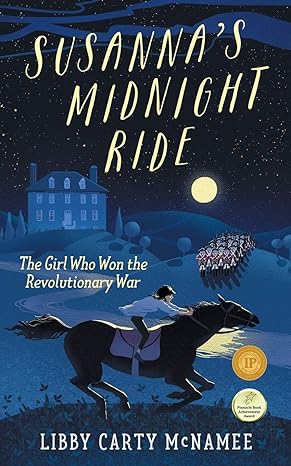 11/28/23 I’ve been reading my Charley book, the adult history one since last summer, but my critique partners suggested I need to read some children’s books from the Revolutionary period. I always take their advice, especially when it makes good sense. Susanna’s first line caught my eye – Tomorrow I’ll find out if my brothers are dead. Talk about starting with tension! My writing friends suggested pushing up the tension in a few key places in my manuscript. It keeps kids reading! This book also gave me another view of colonial culture and revolutionary heroes. I got to meet Benedict Arnold, General Cornwallis, and the only hero – Lafayette in its pages. The best part about reading this middle grade novel – it’s a true story that’s fictionalized, like the book I’m writing. And like my story, it’s based on research, of the characters and the time period. It’s a great mentor text! 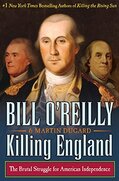 BTW – there is a prequel to this story that’s in the book Killing England . . . In January of 1781 Richmond was burned. The government escaped to Charlottesville so the British reset their target and took another swipe at it, and at 4 signers – Thomas Jefferson, Thomas Nelson, Benjamin Harrison, and Richard Henry Lee. They all escaped, thanks to Jack Jouett who did a little eavesdropping. Then he took the ride of his life. Just like Susanna, Jack’s face was scratched up by the ride. His was so bad he had scars for the rest of his life. If you’d like to read a bit more of what I wrote from the Killing England, click on this link and scan down until you see the cover: http://www.rindabeach.com/blog/the-books-i-read-for-research 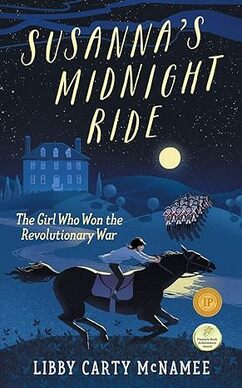 Amazon’s Description: #1 IN JUVENILE FICTION, 2020 INDEPENDENT PUBLISHER BOOK AWARDS ("IPPY AWARDS"); #1 IN JUVENILE FICTION, 2020 PINNACLE BOOK AWARDS; FINALIST IN FICTION: HISTORICAL, 2020BEST BOOK AWARDS. As the former Colonies struggle for freedom, the American Revolution is in the hands of a brave and resourceful teenage girl. At sixteen, Susanna Bolling is like America in rebellion; she craves independence. While her brothers are off fighting for the Patriots, she longs to do more than tedious household chores and attend spinning bees in sleepy City Point, Virginia. When British General Cornwallis invades her family’s Bollingbrook Plantation, she overhears his secret plan to defeat the Patriots. Much to her shock, she finds herself at the center of the war. Now America’s fight for liberty hinges on her. But can she overcome her mother’s objections, face her own fears, and outwit the famed General and his entire Army? Based on the TRUE story of revolutionary courage and conviction that’s sure to captivate readers of all ages. Part 1 – Do you know how these two books are related? Make Way For Ducklings won the Caldecott Medal back in 1941. It’s the story of Mrs. Mallard’s search for a home for her eight little ducklings. Where does she find it? At the Boston Public Gardens. Be Strong is a brand-new book. I thought it came out in December 2023, but I was wrong. I forgot I got it early because I was part of the author's crowdfunding project. But don't worry! It's out now, since March 5. Be Strong is the story of Nancy Schön, of how she created statues of Mrs. Mallard and all her little ducklings. Then she did what the book did – she took them home to the Boston Public Gardens If you’d like to check out my book review for Be Strong, here’s the link: http://www.rindabeach.com/my-reads/be-strong-the-rise-of-beloved-public-art-sculptor-nancy-scho If you can’t make it to Boston, take a look at this photo. Mrs. Mallard is leading her ducklings across the garden. And the best part about public art, you can interact with it. Take a picture with a duckling, or give each one a hug. It doesn’t matter. This is public art, so you’re allowed 😊 Part 2 – Have you ever seen public art in person, or taken a photo beside it? I have! Do you recognize the first statue? It’s public art from the Bremen Town Musicians, and you’ll find the statue in Bremen, Germany. When I was there in 2008, I had my picture taken beside it. So did everyone around me. The second statue is at the Armstrong Air and Space Museum in Wapakoneta, Ohio. Do you recognize this piece of public art? It’s a young Neil Armstrong holding his favorite thing – an airplane. He’s a hero in Wapak and beyond. Why? He was the first man to set foot on the moon. I haven’t had my photo taken with him yet, but I’ve seen lots of people take advantage of this photo op. I found these three pieces of public art on Pixabay. My grandkids would love the first and last statue. They look like the ones they play with at their favorite zoo. Then it’s time for a photo. They LOVE public art! I didn’t recognize the pair in the middle. I went back to Pixabay to find their names, Dogman and Rabbitgirl. Who knew? Google did! I looked them up, and they’re actually famous pieces of public art scupted by Gillie and Marc. Who knew? They’re stories for modern times, and you can find them in places like New York City or London. If you’d like to look for yourself, or buy a piece of art, here’s the link for Gillie and Marc: I Am (Rabbit) Woman – Gillie and Marc® Part 3 – Where in the world can you find Nancy Schön’s public art? Since 1987 Nancy has created 26 statues. You’ll find 18 of them in Massachusetts. Six are in other states in the continental US, and two are outside the country. Can you find the six states on the map where you’ll find Nancy’s statues? Look for: Tennessee, Florida, Ohio, Arkansas, Maine, and Oklahoma. If you live in Massachusetts or in any of the other six states, click below on Nancy’s link, and you can look up the name of the statue, city, and the state it’s in. If you go for a visit, I hope you make time for a photo op. Link: Nancy Schön - Wikipedia And the two that are outside the United States, they’re in Israel and Russia. Can you find them on this map? If you happen to find yourself in Moscow, Russia or Tel Aviv, Israel, I hope you have time for a photo op too. You’ll find the name of both statues on the link above. 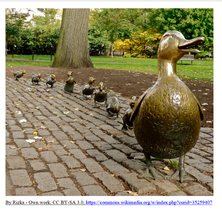 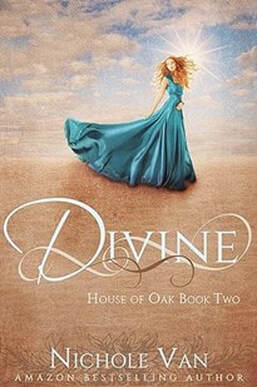 Finished 12/26 This is Book 2 from the House of Oak series. The best part of a series is meeting the characters you already loved. Emry and James were the lead characters in Book 1, and Georgiana had a supporting role. Her starring moment came when Emry had to take her back through the portal to save her life. In Book 2, Georgie takes the starring role. She’s cured, but she’s struggling to find her place in the 21st century. THEN the impossible happens . . . she receives a love letter from the past, and she wrote it! As a lover of mysteries, there’s only one thing she can do – time travel back to discover the love of her life, but there’s a twist . . . gooseberries! Watch whenever they’re mentioned – they’re the key to the plot. In 2013 Georgie’s boyfriend belongs to GLIB – Gooseberry Lovers International Brotherhood. Back in 1813 they figured into the plot too. Sebastian Carew enters the story when he becomes the Earl of Stratton. There’s only one small problem – if he isn’t married by his birthday, he will forfeit 60,000 pounds, and the money will go to 3 gooseberry societies. I’d never heard of gooseberries until I read this book and its back matter. If you’re curious what gooseberries look like, take a look under this paragraph. Gooseberry societies and competitions were a fad in the early 1800’s. If you were a gooseberry back then, you were a lax chaperone who wasn’t keeping an eye on your charge. Gooseberries are still popular in Britain, but now it means you’re the third wheel in a group. Amazon’s Description: Georgiana Knight--born in the nineteenth century, but now living in 2013--has certain standards when it comes to mysteries: they must involve blood curdling threats, late-night rendezvous and the terror of Imminent Danger. So far, her current mystery has been a terrible disappointment. No ghosts, no dastardly villains, not even an actual murder weapon. Just a suspicious symbol, a drawing of a bloody dagger, and an old love letter. Though the centuries-old love letter is written in her own handwriting, so that's something, right? And there is a time portal in her cellar. Should she risk giving up hot showers and return to the past to discover the mysterious stranger who inspired (will inspire?) her passionate letter? In 1813, Sebastian Carew has his own mystery to solve. As a teenager, he fell madly in love with his childhood friend, Georgiana. Ten years later, he returns from fighting abroad as an eligible man of fortune who must marry. And soon. He is determined to fend off fortune-hunting women, find Georgiana, and win her affections. However, she has utterly vanished. Can he divine the truth of her disappearance and convince her to marry him before time runs out? 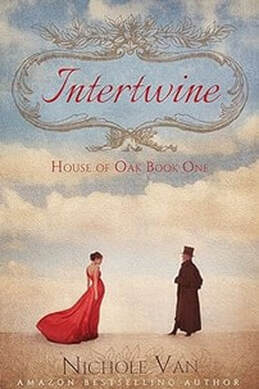 Finished 11/12 This was Nichole’s debut book from February of 2014. I found it in June, and I’ve been reading her work ever since. Intertwine is a time travel novel with Emry coming from 2012, and James from England, 200 years later. It’s a parallel story with the plot moving back and forth between the two characters. I love how she weaves them together. Nichole was an award-winning photographer before she started writing. I think it gave her an edge in picturing her characters and their story. She also uses Pinterest to store photos and notes to use later. I’d never heard of that before. I finished Nichole’s newest book before I started her first one again. I never noticed her growth as a writer until now. I loved her stories before, but her writing feels richer and deeper. I think it comes from the way she shows her characters’ emotions through their actions. She also uses historical details like furniture and clothing to help you picture the setting. Amazon’s Description: Outlander meets Bridgerton in a love story for the ages! Time is not a river. It is a vast cosmic sea. Where each life exists as rippling circles on its surface, past and future being eternally present. And occasionally, one expanding ring intertwines with that of another, weaving the lives of two people together . . . In 2012, Emme Wilde can’t find the right guy. She wants to feel that swept-off-your-feet dizziness of true love. But so far, her dating life has come up short. Star Trek geek? Nice but too serious. Hippy artist? Cute but too vulnerable. Instead, Emme obsesses over the portrait of an unknown man in an old locket. Granted, a seriously dreamy guy with delicious, wind-swept hair she just itches to run her fingers through. But still. Dead men may be great listeners, but they are not exactly boyfriend material. Emme travels to England, determined to uncover his history and conquer the strong connection she feels. In 1812, James Knight has given up finding the right woman. All he wants is someone to share his love of adventure. Instead, his life has become a Shakespearean drama. His brother languishes in a tragic star-crossed romance. His beloved sister clings to life, slowly dying of consumption. But then he finds a beautiful mystery woman, dripping wet and half-dead, beneath a tree on his estate. Now if he can uncover her history, perhaps adventure—and romance—will find him at last. 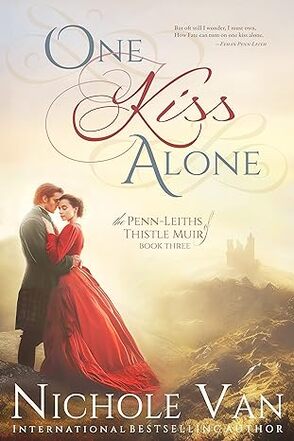 Finished 10/16 I love a good series, and Nichole Van always delivers. This is book 3 in the Penn-Leith series so I’d already met the main character, Ethan Penn-Leith. My only question, who would become his leading lady, and Lady Allegra Gilbert did not disappoint. This was my first-time reading book 3. I met Allegra on an Italian stagecoach, and she’s not a meek miss. She’s an undercover member of the La Giovine Italia. I know, I’d never heard of it either, but it was a real political group in the 19th century. Their goal – to reunite Italy. Allegra is half Italian, but she’s also the daughter of an English duke. How they meet and have that first kiss – you’ll have to read for yourself, but the plot kept me guessing about what they’d do next. The second time through I noticed how rich the writing is. There’s a balance between dialogue and action. There’s also a depth in how Nichole reveals emotions, in actions. Allegra might look away or clear her throat in embarrassment. There’s historical detail in the clothes they wore, the foods they ate, the furniture they used. They help you imagine the story, and those riches turned book 3 into a mentor text for me and my middle grade novel. The stories are different, but they both have historical settings that are key to creating a good read. Amazon’s Description: Ethan Penn-Leith is the most renowned poet of his day—his likeness so widely recognized, he is regularly accosted by adoring admirers. Everyone wants something from him—his time, words, charm, torn bits of his kilt . . . Everyone, that is, but Lady Allegra Gilbert. Twin sister to the authoritarian Duke of Kendall, Lady Allegra fights for freedom from her brother’s iron-gripped control. She has a plan for her future, after all, one that does not involve her ducal twin. Ethan Penn-Leith with his knee-melting smiles and boyish charm is merely a pretty distraction along the path to independence. The problem? Ethan and Lady Allegra once shared a life-altering kiss on a rugged mountain road in Italy when she was disguised as someone else entirely. Ever the poet, Ethan turned their romantic kiss into a scandalous, best-selling poem. Now, all of London is clamoring to know the identity of the poet’s unnamed lady. If she wishes her freedom, Lady Allegra needs to keep her secrets, well . . . secret. Ethan wants nothing more than to uncover all of Allegra’s truths. In between outrunning legions of Ethan’s admirers, becoming stranded in a seaside village, and journeying by ducal decree to rural Scotland, Ethan and Allegra struggle to decide what they each truly want. Or perhaps, in the end, Fate will turn on one kiss alone? 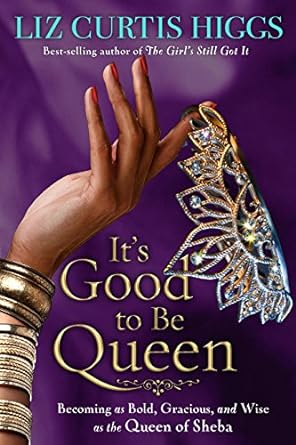 Finished 9/17 I picked this book because a writing mentor suggested it, and I couldn’t resist the title. It just called me to read it again. It’s the story of how Soloman and the Queen of Sheba met. It’s steeped in biblical research, but we don’t know everything about that meeting. Liz found a way to connect some of those dots. For example, have you ever wondered how long Sheba stayed? At least two months, because that’s how long a camel must rest before making the big trip home again. These three chapter titles spoke to me, so I decided to share them with you. 1. Be open to whatever God has prepared for you. I do this in my writing life. I started because I met a bat on a mop in Germany. Now I’m writing about the founding fathers because a post on Facebook called me to write about them. 2. Praise God in all things and in every season. I pray each night before I go to sleep. I thank God for my blessings. When something goes wrong, I ask for his help to find the silver lining. 3. Receive graciously, to honor God and the giver. I never thought of receiving this way. When you’re given a gift, it’s from a person, and it’s also from God. By giving we show God’s love and our own. It’s the same for receiving. We accept his love, and the giver’s too. Amazon’s Description: When it comes to famous queens of the Bible, we know the good one, Queen Esther, and the bad one, Queen Jezebel. Now meet the wise one, the queen of Sheba, who traveled to Jerusalem to test the mind and heart of a king. Her quest for wisdom will surprise you, challenge you, inspire you, change you. This wealthy royal from antiquity will show you how to live boldly, seek after truth, ask the right questions, encourage others, receive graciously, and honor the Lord above all. Shedding new light on this ancient biblical role model, Liz Curtis Higgs unveils timeless wisdom for all who aspire to please the king of Kings. The holiday season fills some people with hope, but it can send others into despair. That’s why I decided this was the right time to do a post about it. I have three inspiring quotes. My wish – that each one will help you feel a tiny bit more hopeful. Quote # 1 – I have been bent and broken, but — I hope — into a better shape. Who said it? Charles Dickens Charles Dickens is a famous British author. Have you ever read or watched A Christmas Tale? It’s one of his most famous books. It’s the story of Scrooge, the ultimate miser, who’d rather save a penny than pay it to one of his employees. He’s visited by three ghosts – Christmas Past, Present, and Future. It changes his life, and it proves there’s still hope, even for an old miser! Take a look at these two houses. The first is where Charles Dickens was born. It’s tiny! It begins with the first white door and ends after the two windows. Tiny! The other house is Gads Hill Place. Would you believe his father told him, if he worked hard enough, someday he could buy that house, or another one just like it? The best part about this story, 35 years later, Dickens bought that house when he discovered it was for sale. Dreams do come true! His life wasn’t filled with sunshine and rainbows. When Dickens was 12, his father spent his way into a debtors’ prison at Marshalsea. His mother and younger siblings had to live there too. Dickens and his sister didn’t. They were in school, so they had to visit the family on Sunday. Later that year, Dickens had to quit school and work in a blacking factory. The second sketch is of him, slumped over a desk, exhausted. He worked ten hours a day, 6 days a week, pasting labels on pots of black boot polish. His pay – 6 shillings a week. That experience would shape the stories he’d write. You’ll find his story best told in David Copperfield. Note – I used a currency converter to change Dickens’ 6 shillings into pounds. In 2017 he would have earned £17.23 (pounds) or $21.60 a week. I’ve been bent and broken” is a quote from Great Expectations. It reminds us that there’s hope, a silver lining, when we face challenges and work our way through them. Most people think of books written and published as one completed novel. That wasn’t true for Dickens. He wrote many of them as monthly installments in literary journals. Later they were reprinted as books. The best part – it made his stories cheaper and more accessible to a wider audience, beyond just the wealthy. For Dickens it gave him more time to explore and develop his characters and plots. He learned to leave cliffhangers at the end of each installment – to keep readers waiting for the next episode. And yet his plots held together across an entire book. I’ve known and watched A Christmas Carol since I was little, but I’ve never wondered what Dickens looked like. The first painting was done by Margaret Gillies in 1843. Dickens was only 31, and he was busy writing the story of Ebenezer Scrooge. The second was painted by Jeremiah Gurney sometime in 1867/1868. Dickens was about 55. No wonder he looks so much older, and perhaps, more serious. Dickens was prolific in his writing, and you can see that in the painting, Dickens’ Dream by Robert William Buss. The tiny black and white illustrations are the characters Dickens brought to life in his books. Prolific fits! The final photo is of his grave on the floor of Westminster Abbey. I was there, and shocked to find you could step on it. I couldn’t. This photo is from 2012 when England was celebrating 200 years of his stories. People are still turning them into modern movies. They’re still reprinting his books and selling them on Amazon 😊 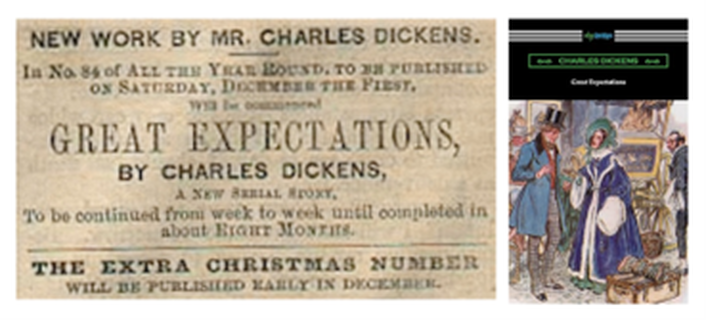 Quote: Daily Inspiration | Inspiring Quotes Information: Charles Dickens - Wikipedia Gads Hill Place - Wikipedia Currency converter: 1270–2017 (nationalarchives.gov.uk) Quote # 2 – Hope springs eternal in the human breast. Who said it? Alexander Pope 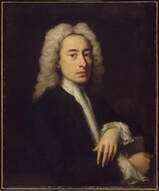 Alexander was a famous writer born in London, England in 1688. That was about 60 years after the Pilgrims landed at Plymouth Rock. He died in 1717. That was almost 60 years before the American Revolution began. His parents were Catholic, and he was influenced by a series of laws that promoted the Church of England. They also banned Catholics from teaching, attending universities, voting, or holding government office. If you broke the law by doing any of those things, you went to jail. His aunt taught him how to read, and he went to several Roman Catholic schools in London. They were illegal, but tolerated. These are two of the houses Pope lived in. The first photo is recent. It’s of a building now known as the Mawson Arms. Way back when, it was the home of Pope’s parents. He lived in Mawson Row in Chiswick with them for 3 years, from 1716 to 1719. During those same years Pope was translating the Odyssey by Homer. By 1719 he’d earned enough money to buy the second house, in Twickenham. The house and the gardens were torn down to make room for something new, but his grotto is still there. The quote ‘Hope springs eternal’ came from his poem An Essay on Man. When he wrote that line, he was writing about his Catholic faith and the hope for life after death. I’m Lutheran, but I believe in the same things about hope, life, and the afterlife. Here’s a list of the poems and stories he wrote during his lifetime, and the translations he made so that English men and women could read them. 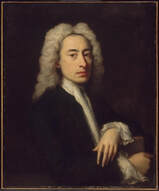 Quote # 2 – Hope springs eternal in the human breast. Who said it? Robert Frost Robert Frost was a famous American poet. He was born 9 years after the Civil War ended. He died in 1963, one year before the Civil Rights Act was passed. It was supposed to end discrimination based on race, color, religion, or where you were born. Imagine being born just after the end of slavery and living to see the fight to end discrimination. I was 4 when Robert died, and I’ve seen a lot of change in my lifetime. Robert lived to be 89. I’m only 64. I wonder what I’ll see if I live to be 89, like Robert. His three biggest achievements – Robert is the only poet to earn 4 Pulitzer Prizes for Poetry. In 1960 he was awarded the Congressional Gold Medal for his writing, and the next year Vermont named him their Poet Laureate. I always think of a laureate as someone’s favorite poet, but they’re actually supposed to write poetry for them. In this case, for Vermont. This is one of Robert’s homes. It’s in Derry, New Hampshire. He wrote many poems when he lived here, from 1900 until1911. It looks like a peaceful place to write, but his mother died from cancer, and he lost 2 of his children during that time. Life wasn’t perfect, but it fueled his work. The quote, ‘The best way out is through’ came from a collection Robert published in 1914. The poem, “A Servant of Servants, is not a happy one. I read it, and I felt depressed. It’s about a housewife who spends her day cooking, cleaning, and taking care of others. The only way out was to work your way through the day. According to the folks at Inspiring Quotes.com, hope and stubborn determination can get you through your troubles. This is one of my father’s favorite poems. The other one is also by Robert Frost. Sorry, the only thing I’d change about this image. . . the woods. It should be more yellow. That’s the way he wrote it. The poem is “The Road Not Taken”’ as it was featured in Robert’s 1916 book, Mountain Interval. Here’s a list of Robert Frost’s work from Wikipedia. His first poems were published in 1913. His last, in 1969. What a legacy of work he gave us during those fifty years of writing! Poetry collections
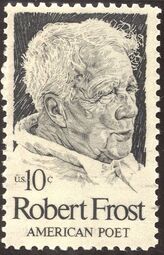 Quote: Daily Inspiration | Inspiring Quotes Link: A Servant To Servants, by Robert Frost Information: Robert Frost - Wikipedia I bought this book last September, in 2022. I shop whenever I’m watching an OSU football game. It’s a superstition, but it makes me feel like I’m doing my part to help the Buckeyes win. 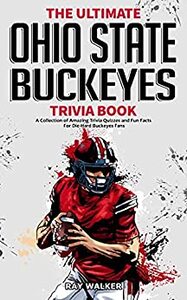 My Stats from Last Year: Trivia score Name Recognition Chapter 1 5 of 20 -- Chapter 2 7 14 of 28 Chapter 3 11 11 of 20 Chapter 4 5 9 of 22 Chapter 5 5 7 of 21 Chapter 6 5 12 of 38 Chapter 7 8 10 of 26 That means my best scores came in Chapter 5 for both trivia and name recognition. It was all about catching the ball, AKA the receivers. Here’s my link to last year’s trivia: http://www.rindabeach.com/blog/trivial-pursuit-the-ohio-state-football-way Game Day Saturday, September 16 - Chapter 8 - How I did, and what I learned. Chapter 8: Coaching Carousel: I thought I’d do better on this chapter than I did. I’ve been following Ohio State football since the 60s. I can name the coaches in order . . . Woody Hayes, Earle Bruce, John Cooper, Jim Tressel, Urban Meyer, and Ryan Day. I double checked, and I missed one. Luke Fickel was coach for less than a year. He came between Tressel and Meyer. I have a soft spot for Luke’s wife, Amy. She comes from Spencerville, Ohio. That’s just up the road from my house in Wapak. In spite of knowing all that, I was back to mediocre again, 7 right out of 20. YUCK! And on name recognition, I knew 11 out of 23. Yep, mediocre, but, these questions are hard! These are my four favorite OSU coaches. I don’t know any of the ones before Woody. I was born in 1959, and Woody became head coach in 1951. He was still there during the fall of 1978 when I was a freshman. I feel sorry now for the next two coaches . . . There was no way they could compare to Woody, and the three that followed . . . I loved them like Woody 😊 Now for my Pick 3 questions, they’re all about the best OSU coach ever – Wayne Woodrow Hayes! 3. Including Woody Hayes, how many coaches have the Buckeyes had since hiring Hayes in 1951? A. 4 B. 5 C. 6 D. 7 I got it right . . . 7! You can double check the answer in the first paragraph. I named those 7 coaches in order, and I only forgot 1. Not bad! 11. How many Big Ten championships did Woody Hayes win as the Buckeyes’ head coach? A. 13 B. 15 C. 11 D. 17 Shucks! I guessed 17. Too high! The answer . . . 13. I guess even Woody couldn’t win them all, but he sure tried. 18. Urban Meyer and Jim Tressel combined to coach more All-Americans at Ohio State than Woody Hayes. A. True B. False I missed it! I said true, that two coaches could produce more All-Americans than just one. Wrong! I forgot that Woody coached for 28 years, while Jim and Urban only did 15, altogether. Wow! What a coach! Fun Fact: Before Woody came, OSU was known as the coaches’ graveyard. Game Day Saturday, September 23 – Chapter 9 - How I did. I started Chapter 9 during the Notre Dame game, and it was quite a game . . . I only managed to answer the questions. That’s it. Today the Buckeyes are playing Maryland so I’m going to try to do the writing. Chapter 9: Championship Caliber: I had no idea how I’d do this time. Who remembers championships after they’re over? Not me! I was surprised I actually did a little better . . . up from 7 to 8 on the multiple-choice questions. On name recognition I knew 10 out of 20. Woo-hoo! That’s 50%. Still mediocre, but a little bit better! Game Day Saturday, October 7 - Chapter 9 – What Resonated with Me None of the questions or their answers resonated with me, but the additional information from Ray Walker did. During the Notre Dame game, and afterwards something struck home. I didn’t know that Lou Holtz made a few comments about the Buckeyes, and Ryan Day answered back after the game, that it was Ohio against the world. It feels like it’s always been that way. 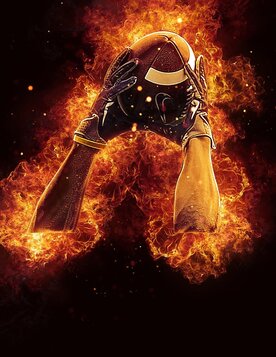 - Ray noted that in 2018 ESPN ranked the national champions from the BCS years, and they put the 2002 Buckeyes last. The reason, the Buckeyes had a lot of close games as they finished out the season. ESPN said they just weren’t dominant enough. Gee, I thought winning was everything! It didn’t matter that the Buckeyes were the first to win 14 games in a season, or that they were 1 of 9 teams on the list to go unbeaten and win the national championship. When you’re ranked high, you have a target on your back. Add in that 2002 team were the first #2 to beat a #1 during the BCS years, but that didn’t matter to the powers at ESPN that made the rankings. (Like always, Ohio against the world) Game Day Saturday, October 14 – Chapter 10 - How I did I didn’t! I went to a baby shower, but I kept track of the score. When I got home, the game was still on, but we had company, so no chapter 10 ☹ But the Buckeyes beat Purdue 41 – 7 . . . Woohoo! Game Day Saturday, October 21 – Chapter 10, Finally! How I did & What Resonated with Me Chapter 10: Going Bowling: I had a bad feeling about this chapter . . . It’s either the kind with one ball and nine pins, or the kind that involves holiday football games in warm destinations. I figured I’d be terrible at both ☹ I’m glad I was prepared. I went down, 5 out of 20 on the multiple-choice questions. FIVE! That’s like a 25%. OUCH! On name recognition I knew 7 out of 20. A 35% is a little better, but not much. Double OUCH! What Resonated with Me: 1. I recognized two names – William White and Bobby Hoying. They were both local boys, from the county right next door. William grew up in Lima and played football for the Spartans. Northwest Ohio was thrilled when he became a Buckeye, and so was I. 2. Bobby grew up in St. Henry, and he played for the Redskins. He was chosen as Mr. Football back in 1990, out of all the high school players from across the state. Bobby went from playing quarterback in a small town in Mercer County to playing at The Ohio State University. It’s incredible when a local boy succeeds, and both Bobby and William made it all the way to the NFL. WOW! 3. I found a not-so-good memory in this chapter about bowl games, with Clemson. They were the team that got Woody Hayes fired. He was and still is my favorite coach ever. It began when Clemson intercepted a pass near the end of the game. Woody was known for his temper, and he grabbed the player’s jersey and hit him. The Buckeye team captain pulled Woody off the kid, and he was fired the next day. It was a sad end for Woody and his coaching career, but he was forgiven, and I’m glad his contributions have not been forgotten. PS – OSU lost that game in 1978. They’d lose again to Clemson in 2016 and 2019, but they finally beat them in 2021 . . . 49 – 28. There’s nothing like the thrill of victory after those 3 defeats. Game Day Saturday, October 28 - Chapter 11 - How I did, and what I learned. Chapter 11: Draft Day: I had no idea how I’d do in this chapter. I’ve never paid attention to the draft, ever! My results – I went up one, to 6 out of 20 on the multiple-choice questions. That’s 30%. Guessing stinks as a strategy, but it’s all I had ☹ On name recognition I knew more names than last time, 22, but there were 30 I didn’t know. My score – 22 out of 50, for a 42%. YIKES! ☹ I discovered after reading this chapter that draft day doesn’t always lead to a contract. It means nothing, until that contract is signed. Here are 3 stories about 3 superstar Buckeyes. 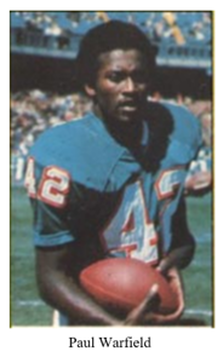 #1. Have you heard of Paul Warfield? The Cleveland Browns drafted him in 1964. I was only 5 years old, but somehow, I remember he was fast. As a Buckeye he was a halfback. That meant he lined up with the offense, and he ran the ball down the field. Funny, I thought that would make him a running back! Cleveland picked him as a defensive back, but they also knew he could catch the ball. So, they decided to try him as a receiver. The result – Paul learned how to catch the ball that first year in the NFL. I guess your team gets a HUGE say on what position you play. 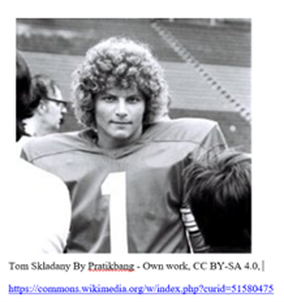 #2. Tom Skladany is another name I remember. He left OSU before I came in as a freshman. He was a gifted kicker, the first specialty player to ever get a scholarship to a Big 10 school. The Browns picked him in the second round of the 1977 draft, but he never signed with them. He wound up sitting out the whole 1977 NFL season. Why? Evidently Art Modell called his agent ‘the biggest thorn in the side of professional football.” Art put Tom on the trading block, first with the Rams in return for two second round picks. Later he shipped Tom off to the Lions for a second and seventh round pick for 1978. OUCH! 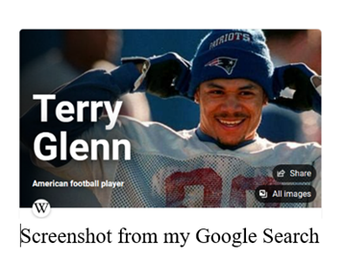 #3. Terry Glenn’s story from 1996 caught my eye. I was a mom with three kids by then, and I had time for football again. Terry had great hands . . . he was a receiver, and he was the seventh pick, in THE first round. Talented, right?! Well not enough for Bill Parcells, the coach for the New England Patriots. He said, “If they want you to cook the dinner, at least they ought to let you shop for some of the groceries.” Evidently Parcells didn’t want Terry, but two higher ups did . . . owner Bob Kraft and general manager, Bobby Grier. I have a feeling Parcells was happier with Terry by the end of the season . . . He set a rookie record of 90 catches, and they helped the Patriots into the Super Bowl that year. Game Day Saturday, November 4 - Chapter 12 - How I did, and what I learned. Chapter 12: Writing the Record Book: I had no idea once again how I’d do on this chapter. I would hear someone set a record, then promptly forget about it. My results on multiple choice questions – I went up one again, to 7 out of 20. That’s another 35%. Guessing isn’t the best strategy, but it’s all I had, again ☹ On name recognition this was one of my best scores, I knew 20, and I didn’t recognize 12. My score – 20 out of 32, for a sky-high 63%. That’s still a D or an F. YIKES! ☹ Game Day Saturday, November 11 - Chapter 12 – Three Record-Setting Stories 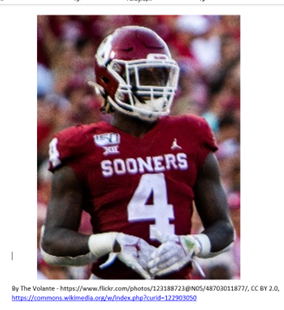 #1. What would you do if you were the quarterback, and your passing game was off? Duh! You’d hand the ball to a running back. In 2020, that’s exactly what Justin Fields did in the Big Ten championship game. He handed the ball to Trey Sermon who had just transferred in from Oklahoma. I’m glad he did! Trey carried the ball 29 times, right into the OSU record book. He ran 331 yards that day against the Northwestern Wildcats. His best two plays, in the third quarter. Trey ran 65 yards, then 33, right into the end zone for a touchdown. That gave the Buckeyes their first lead in the game. Imagine, the Buckeyes behind in the third quarter?! OUCH! In the fourth quarter Trey’s running game gave OSU another touchdown and a spot in the College Football Playoff. He was the MVP, duh! Thanks, Trey, for saving the game! Bonus Source: Trey Sermon - Wikipedia 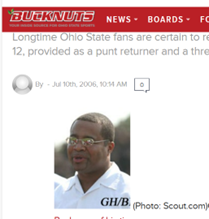 #2. Meet Garcia Lane. This is the only picture I could find of him, and it was long after he set his OSU record in 1983. I graduated in June 1981 so I remember him well. He was a great player! His record – a pair of punt returns in ONE game against Purdue. The first came in the third quarter. Garcia caught the ball on his own 37, ran to his left, then cut back to the right. That’s when he found his hole and ran down the field for a 63-yard touchdown. Woohoo! Later in that same quarter, the Boilermakers punted to Garcia again. This time, no need for cutbacks. Garcia followed his blockers for another touchdown. This time – for 71 yards. Would you believe those were the second and third touchdowns of his OSU career? I didn’t realize returning a punt for 2 touchdowns in one game was exceptional. Only 10 Buckeyes have ever done it, and it took their whole OSU career to make it happen. Only 6 did it in one season, and Garcia, he did it in ONE game. No one has repeated or broken his record, ever. WOW! BTW – Garcia said there were two things he treasured from his years as a Buckeye – the punt return record, and being voted team captain his senior year. He never saw it coming, and it meant the world, because his teammates picked him. Source: On The Lighter Side : Garcia Lane (247sports.com) 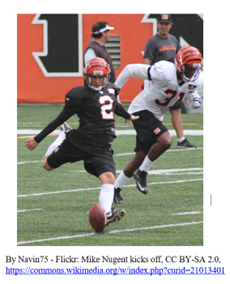 #3. And when it comes to kicking, you’ll find Mike Nugent at the top of all the lists. Some of his records include. . . 1. Mike kicked his way to 120 points in 2002. Think of how many field goals and extra points he had to kick to get there. It’s only been passed 4 times since he graduated in 2004. 2. He still holds the kicking record for college career points (356) 3. Made field goals (72) 4. Mike’s career field goal percentage (81.8%) 5. The number of 50-yard field goals in one season (5) for his career (80) 6. He holds the top two spots for field goals (25 in 2002 and 24 in 2004) 7. He made 24 field goals in a row between 2001 and 2002. 8. He became the second Buckeye to kick 5 field goals in one game. 9. Then he tied the record for perfect games in 2004 at North Carolina State. Mike made 9 perfect kicks, and 8 of them were from at least 50 yards away. Incredible! No wonder Mike played in the NFL from 2005 until 2020. Bonus Source: Mike Nugent Stats | The Football Database (footballdb.com) Game Day Saturday, November 18 - Conclusions from Ray Walker and Me Ray Walker started his conclusions with congratulations – for making it through all 12 chapters. Yay, I did that! He also said if he’d done his job well, that I’d be filled to the brim with new facts. Sorry, Ray. There was just too much information for me to absorb and retain. But Ray did give me a lot of behind-the-scenes stories. I loved reading them, but I wish I could remember them ☹. Ray also said his questions, answers, and stories were meant for readers to enjoy. I liked guessing the answers, but his questions, they were HARD! I even tested myself on name recognition, an extra challenge that I never quite rose to. The hardest part of all was the range of questions. It covered ALL of Buckeye History. I know a lot, from the mid-60’s to the mid-80’s. Then my kids came along, and I lost track of my Buckeyes. I returned in the 90’s thru today. That’s a wide range of sports history to retain, and I didn’t do as well as I thought I would. But I did end up with the fun and Buckeye pride Ray wanted readers to have. I found it when I picked 3 stories from each chapter to write about. Now I’m even more amazed by what my Buckeyes have accomplished throughout my lifetime, and beyond. For my pick-3’s, I always go hunting for pictures, and it’s a trip down memory lane whether I find a picture from their OSU days, or from later on. Then I take Ray’s stories and give them a Rinda-spin . . . by adding in my memories. Meet the Quarterbacks: (Chapter 3 – Calling the Signals) I know each and every one of these names, except for Les Horvath. He was before my time. Rex Kerns is the first one I remember, but I can only recall hearing his name on TV in the ’60s. Art Schlichter is the quarterback from my college years, the ’70s. He had his ups and downs over the years, but the important thing about him – he was a Buckeye. Craig Krenzel was playing when my baby sister was in college, the ’90s. Would you believe he went to the same church she did after they both graduated? She was impressed by his behavior. He acted like everyone else. He was just one of the church faithful, not a star quarterback. Game Day Saturday, November 25 - Memories from 2 Years of OSU Triv Today was THE GAME – the one with Michigan. They won the last 2 years, but I was hoping today would break the pattern. It didn’t ☹ Michigan won again, but only by 6 points. It could have swung the other way, but it didn’t ☹ My question from last week’s post – the one I still remembered after 2 years of trivia – What charm do OSU players get if they beat Michigan? Gold Pants! It makes me sad this is another year without that charm for my favorite team. The Story: In 1934 OSU hired Francis Schmidt as head coach. When the local media got a chance to ask about that team up north, Schmidt said, “They put their pants on one leg at a time, just like the rest of us.” That’s when two Columbus businessmen formed the ‘Gold Pants Club.’ They created gold lapel pins, shaped like football pants. Each player and coach on that winning team gets a gold pin, engraved with their initials, game date, and the score. What kind of trenches do football games have? The one between the offensive and defensive lines. They’re manned by lineman. The offensive ones fight to keep the quarterback safe, and he fights to gain yards/first downs/touchdowns for the team. He can either hand off the ball to a running back or throw it to one of the receivers. The defensive lineman fight to stop the quarterback. If they sack him, he loses yardage. If they stop the running backs, the offense might not get that all important first down. As for those receivers, there are also defensive backs who do whatever they can, within the rules (and sometimes outside them too) to stop the play. If they intercept the ball, that’s even better. It’s the only way a defensive player can EVER score a touchdown. Last year the linemen failed in THE GAME, but they tightened their lines, and the Buckeyes almost beat the #1 team/national champion – Georgia. I was so proud of those linemen. This year they were just as tough. OSU and Michigan were well matched, even with a brand-new quarterback. Kyle threw 2 interceptions, 1 near the beginning of the game. A defender caught it, and it gave Michigan a touchdown. The 2nd was the last play. Another defender caught it, and the clock ran out. The Buckeyes lost by 6 points – the cost of that 1st interception. Many of us think the Michigan pass/touchdown, was actually intercepted. This time by the Buckeyes, but the referees refused to change the call. Oh well, there’s always next year . . . See you at one of the New Year’s bowls! My team is sure to accept an invitation to one of them 😊 Game Day Friday, December 29 - Final Memories from 2 Years of OSU Triva Last night was the Cotton Bowl, the last game of the 2023 season. So many changes have happened since the Michigan game. Our starting quarterback left through the transfer portal. Other players did too, or they declared for the NFL like Marvin Harrison Jr did. I miss the old days when the players finished the WHOLE season. The Cotton Bowl didn’t end the way I hoped, but there were some bright spots . . . the defensive line was excellent. Our second-string quarterback gave his all and tried to play past an injury, but he wound up back on the sidelines. A third-stringer who’d only thrown 5 passes wound up leading the team, in a Bowl game. Incredible! The last time that happened was with Cardale Jones. He led the Buckeyes to a national championship. Here’s to the future, whatever it brings. Life is never dull when you’re a Buckeye! The last trivia question is from Chapter 4 – Between the Tackles, where the running backs rule. #5. Eddie George and Ezekiel Elliott are tied in the record books with the most 200-yard games for the Buckeyes, with how many? 5 4 3 2 The answer . . . 5 games. Both Eddie and Ezekiel had 5 games with over 200 yards. 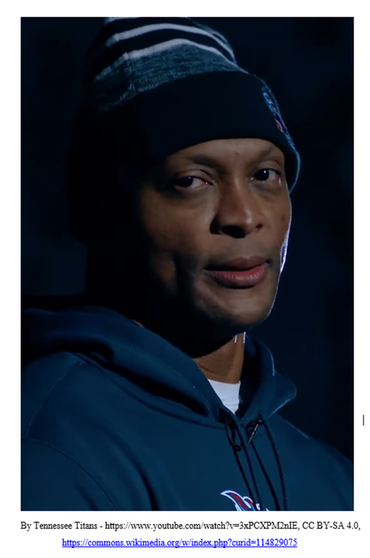 So where are they now? Eddie retired in 2006. He played for the Houston Oilers, who became the Tennessee Titans. Then he went to the Dallas Cowboys. Over his 9 years in the NFL, he rushed for 10,441 yards and scored 68 touchdowns. That’s 408 points he put on the scoreboard. Eddie was NFL Offensive Rookie of the Year in 1995 and a four-time Pro Bowler. The Titans retired Eddie’s #27, which is a huge honor, and he’s a member of the College Football Hall of Fame. After Eddie retired, he went back to OSU to get his bachelor’s degree in landscape architecture. He earned his master’s degree in Management at Northwestern. Eddie hasn’t left football completely behind . . . he was named head coach at Tennessee State in April of 2021, and this is him in 2022. Bonus Source: Ohio State's Eddie George Named Pro Football Hall Of Fame Semifinalist - Sports Illustrated Ohio State Buckeyes News, Analysis and More  As for Ezekiel, he’s still playing. He started with the Dallas Cowboys in 2016. He was an instant star. He was the NFL’s top rusher as a rookie, and players ranked him at #7 in the NFL’s Top 100 Players of 2017. Not bad for a beginner! Ezekiel remained a Top 100 Player for the next 3 years, through 2020. He played for the Cowboys for 6 years, through the end of the 2022 season. In 2021 Ezekiel began dealing with knee and ankle injuries, including a torn ligament in his knee during Week 4, but he refused to sit on the sidelines. He’d play one last season as a Cowboy before they released him in March of 2023. Ezekiel signed a one-year contract with a new team in August, the New England Patriots. He ran third down and red zone plays behind one of the starters. I don’t know where he’ll land in 2024, but I wish him well as a running back, and in life after football. I hope the best is yet to come for him. Bonus Source: Ezekiel Elliott - Wikipedia I’ve been wanting to write this post since the night I got home from the Northern Ohio SCBWI conference, but somehow life got in the way. Post after post came up, and they needed to go first. Now it’s November 20, and I’m finally going to write this post all the way to the finish, I hope 😊 Part 1 – Critique Guidance: I took part of my middle grade novel to the Cleveland conference, and I had an author/agent take a look at the first ten pages from Chapters 1 and 2. She gave me a lot of great advice – like what didn’t make sense to her (I only had 1 or 2 spots – Yay!) She also pointed out places where I needed to push up the writing. How? There was one place I remember where she wanted more historical detail. I wrote about the green tablecloths at the Pennsylvania State House. She wanted to know what kind, so I googled colonial tablecloths . . . I found many were made from damask. If you’re not sure what it is, it’s a woven fabric with a pattern you can see on both sides of the cloth. It’s mostly used in table linen and upholstery, and it was used in colonial times. There were a lot more places where she wanted me to show emotion. I went back and labeled each paragraph with a feeling like happy or sad. I have a writers’ book that’s set up according to emotions, and it has a list of ways that people show it in their faces, in their body language, and by their reactions. I picked one for each paragraph, and then went back to edit them in. I’m still polishing. I’m on my 14th revision of chapter 1, but it’s worth the time to get it right. If an agent or an editor isn’t engaged by that first chapter, they’ll stop reading. Then they’ll send an email that says thanks, but no thanks. I know – I’ve gotten a lot of those over the years ☹ 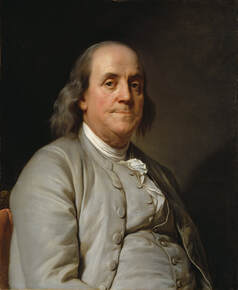 Part 2 – New Chapters – Where I Am Now: In September before the conference, I just finished Chapter 13. It’s now November 22, and I’m stuck on Chapter 17. I was on it last week too. I got stuck trying to find my way in. Once I write the 1st paragraph or 2, I’m on my way. Whenever I start a new chapter, I find 3 sources of information on a founder. I copy all 3 articles, along with their sources. I save them in a file with the notes for that chapter. Then I go to the actual chapter, and I paste in the 1st article, the whole thing. With the 2nd source, I cut and paste it where it fits in the timeline of the original article. I do the same for the 3rd one. Because of this, all the facts about Ben as a printer are together in my timeline. The same is true for his time in the Continental Congress, and so on. The best part about this ‘lengthy’ procedure, it tells me which facts I can use . . . I can find them in 2 or 3 sources. If it’s only in 1 article, I don’t use it. BTW – I did that last week. 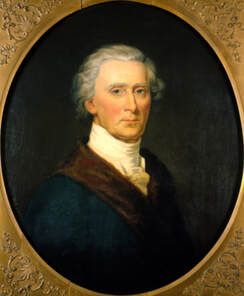 I also researched my main character, Charles Carroll of Carollton. For Charley, I only needed to find out what he and his family were doing in 1789/90. Ben died in April of 1790, and I figured that out last week too. I also needed to know what was going on in America in 1789/90, and yes, I did that last week too. I knew the first US Congress started meeting in 1789 in Federal Hall in New York City. I had a list of bills President Washington signed into law, and I saved my sources, for future reference. With all that, I still couldn’t find my way in. This morning - Ureka! I found it. I could always picture Charley at Federal Hall, but I couldn’t picture how he found out how his friend died – what was going on at that moment, in a historical fiction kind of way. Today I looked at 2 bills Congress passed in April of 1790. Bingo! Now I can picture how he might have learned about it. 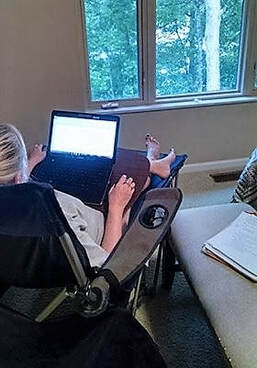 It’s late, so I’ll wait until tomorrow or Friday to write those 1st paragraphs. Once I get going, I let the story take me where it wants to go. Sometimes I take the wrong path. Then I reread until I reach the point where I left the right path and took the wrong one. I delete that section, go back, and rewrite it. Usually it takes me 2-3 days to write and revise a new chapter. Why? It doesn’t have to be perfect. I have one chance with my new chapter and my Friday critique group. Then I have to move onto #18 for next Friday, if I want to finish all 57 chapters by the end of the summer. Fingers crossed – may the force be with me!  Part 3 – My Goals for December: Starting next week, I’ll be part of 3 critique groups. One meets every Friday. Another meets on Tuesdays at least once a month, maybe twice if I’m lucky. I have a third that meets on Wednesday once, sometimes twice a month. My goal is to have one new chapter critique-ready for each meeting. My Friday goal will be the hardest one to reach. I have to finish a chapter a week, and I only get one chance to get it done. That means by the end of the month, I’ll be sharing chapter 22 on December 29th. There’s no room for revision. I take my Friday critique notes, add them to the chapter, and move onto the next one. I’ve been on chapter 17 for 2 weeks. That’s how long it took to write the first paragraph. It seems to happen whenever I move to a new setting. It’s harder for me to find my way in. If that happens again, I’ll fall short of 22.  The Wednesday group is now my polishing group. It’s the opposite of Friday. We’ll meet once or twice this month. I’m on my 14th revision of chapter 1, and my Wednesday friends have looked at this piece 5 or 6 times. My goal –to finish it, I hope, then polish chapter 2. My Wednesday group, they have a great eye for detail. They won’t let me call it polished until it’s just right, like a bullseye on a target.  My Tuesday group is BRAND-NEW! We’ll have our 1st meeting next Tuesday. We might meet again in December, or we might not. I have chapter 2 almost ready for them. I might start working on chapter 3, but only if my Wednesday group says 1 is done. If not, I’ll have them take another look at chapter 2. The most important thing this month – polish chapter 1. The second – to reach chapter 22. May the force be with me 😊  I’d like to thank Cassidy Walker at Media Consulting for reaching out and offering this post from Harriet Moore. It’s on one of my favorite subjects – pets, and how to pick the right one for you. Pets can make wonderful additions to family life by bringing us companionship, unconditional love, and an excuse for the family to spend more quality time together. In fact, 94% of pet owners feel that having a pet makes them happy, and 84% credit their pet with improving their mental health. If you’re thinking about getting a furry, scaly or fluffy friend but you’re not sure which animal is right for your family, follow these three important tips to help you choose. Tip #1 - Consider how active you are or would like to be. Every pet needs some form of regular exercise, but some are more reliant on their owners for exercise than others. Dogs are the most demanding in this respect, requiring at least two walks each day, although the amount of ground you cover on each walk will depend on the size and energy level of the breed. If you want to be more active, getting a dog is a great option. If you already get plenty of exercise and don’t have the time or inclination for much more, a small pet like a hamster or rabbit could be a better choice. Keep in mind that you’ll still need to provide your pet with toys or equipment for exercising, such as a wheel or climbing tower. You may also need to supervise their exercise or play with them to encourage them to get active. Tip #2 - Assess your Home Environment and Available Space Some pets need more space than others, and it’s not just their size that dictates how much space they need. For example, rabbits require an enclosure that is at least eight square feet and tall enough for them to be able to stand on their hind legs. They also need an additional 24 square feet of secure space in which they can exercise. Some pets, such as dogs, need frequent access to outdoor space and are best suited to properties with yards or gardens. Others, such as cats, are content living indoors but require additional equipment such as climbing trees and scratching posts to keep them entertained and active. Tip #3 - Determine your budget for upfront costs and monthly expenses It’s vital that you consider the affordability of a pet in both the short and long term. Upfront costs include the pet’s price or adoption fee, essentials such as enclosures, bedding and toys, and vet fees for things like vaccinations and neutering. Ongoing monthly expenses include food, toileting supplies, flea and worm treatments, pet insurance, and grooming fees. You should also think about irregular additional expenses, such as boarding or pet-sitting fees when you go on vacation. Dogs tend to be the most expensive pet, costing between $700 and $2,000 per year, while fish are one of the least expensive, costing between $50 and $200. Keep in mind the expected lifespan of a pet and ask yourself whether you can realistically commit to the ongoing expense for the entirety of the animal’s life. Final Thoughts - Take your time to choose the perfect pet Welcoming a new pet into your family is a huge commitment, so don’t rush into it too quickly. Take time to research different pets thoroughly to understand what they need for a happy, healthy life. Next, consider your time and activity level, your environment and space, and your budget to determine whether you can give an animal everything it needs. When you choose a pet carefully like this, you can be sure they’ll fit into your family life perfectly.  Meet My Guest Blogger, Harriet Moore
|
AuthorWhen I write, I can only have one voice in my head, mine. A little noise is fine. But too much, or worse yet, WORDS, and I must change rooms or pull out headphones. Then I can write on! Categories
All
|
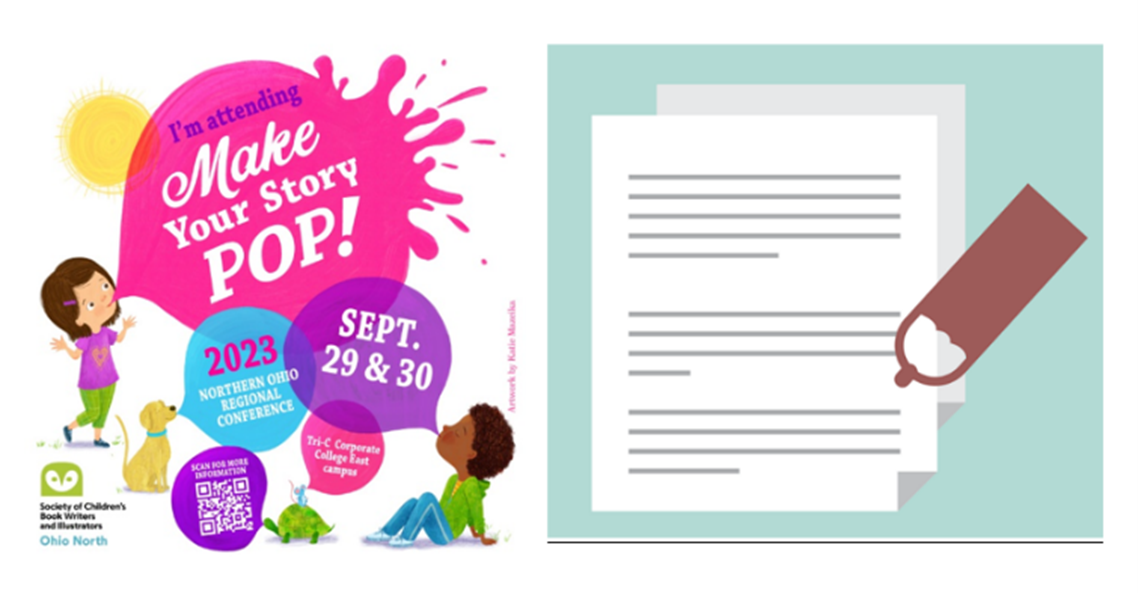
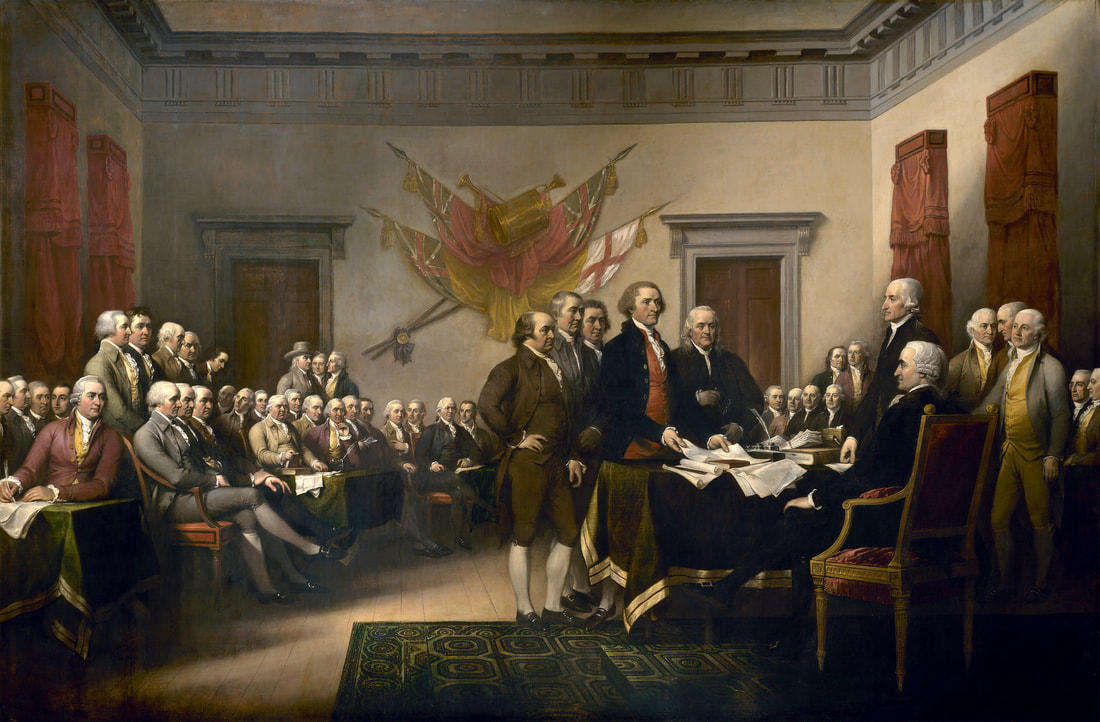

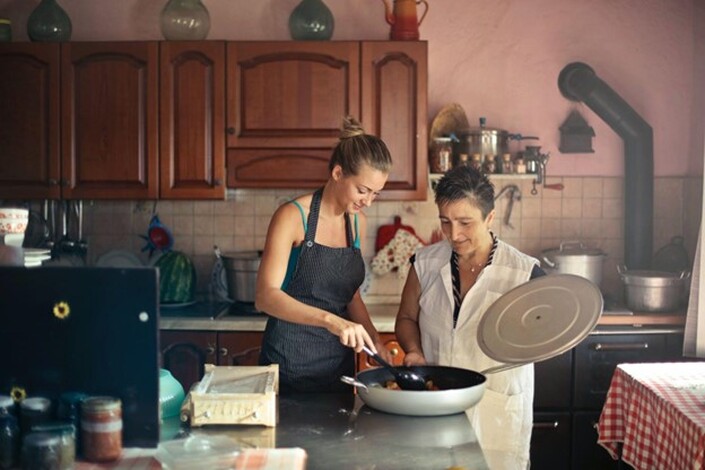




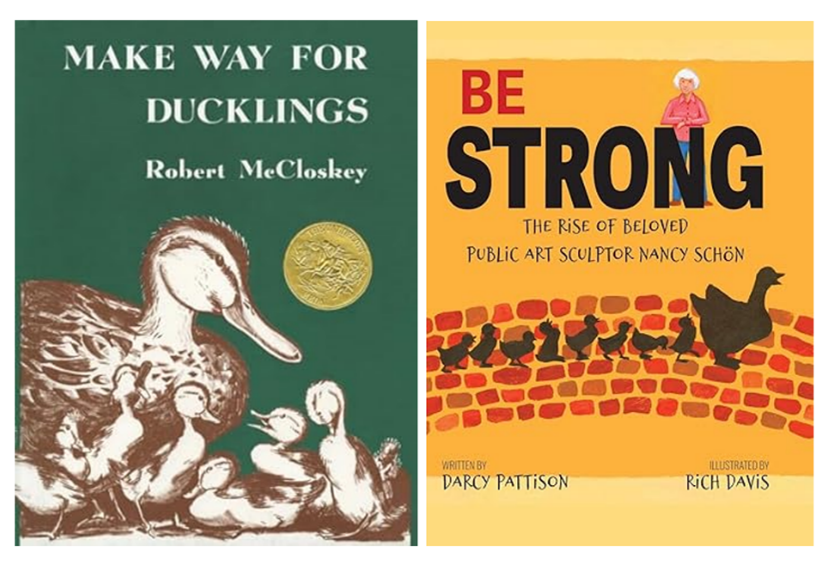
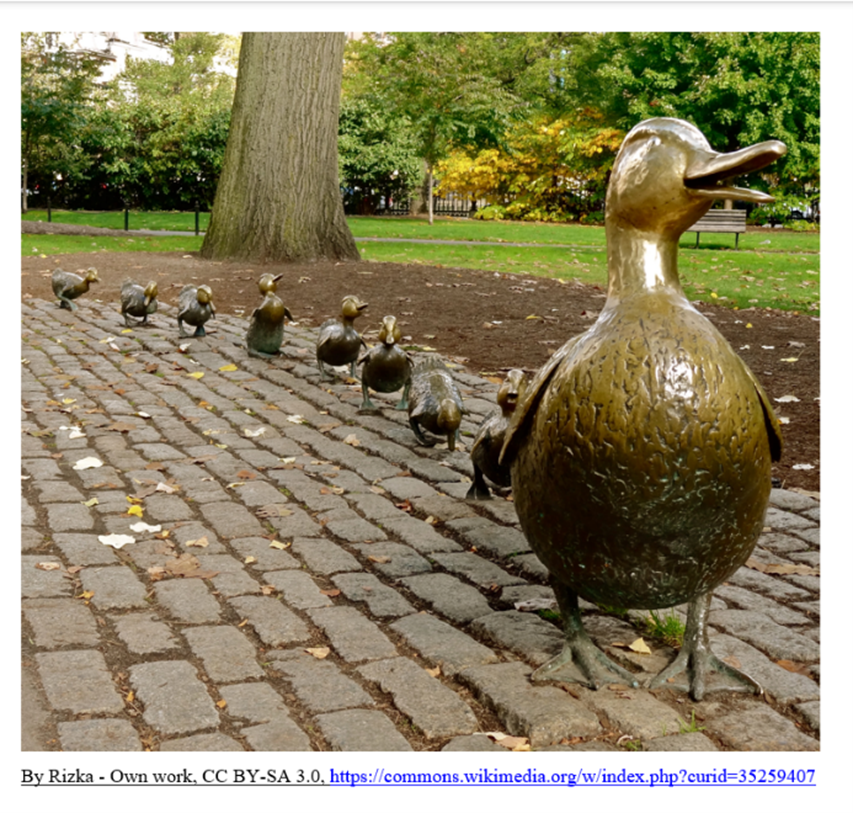
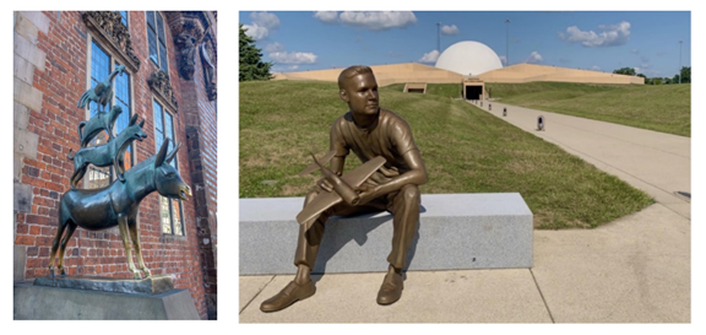

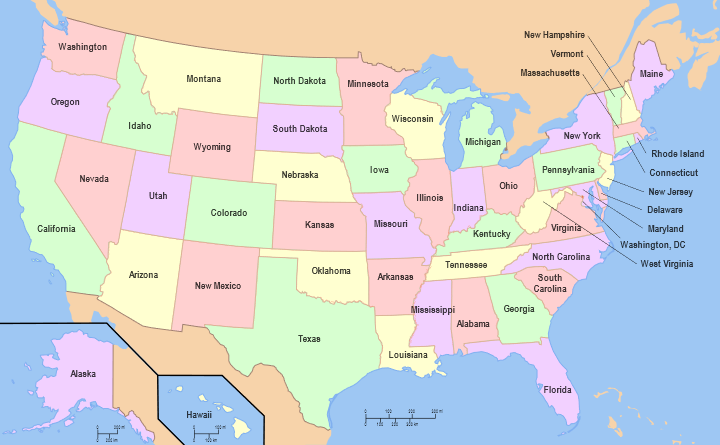
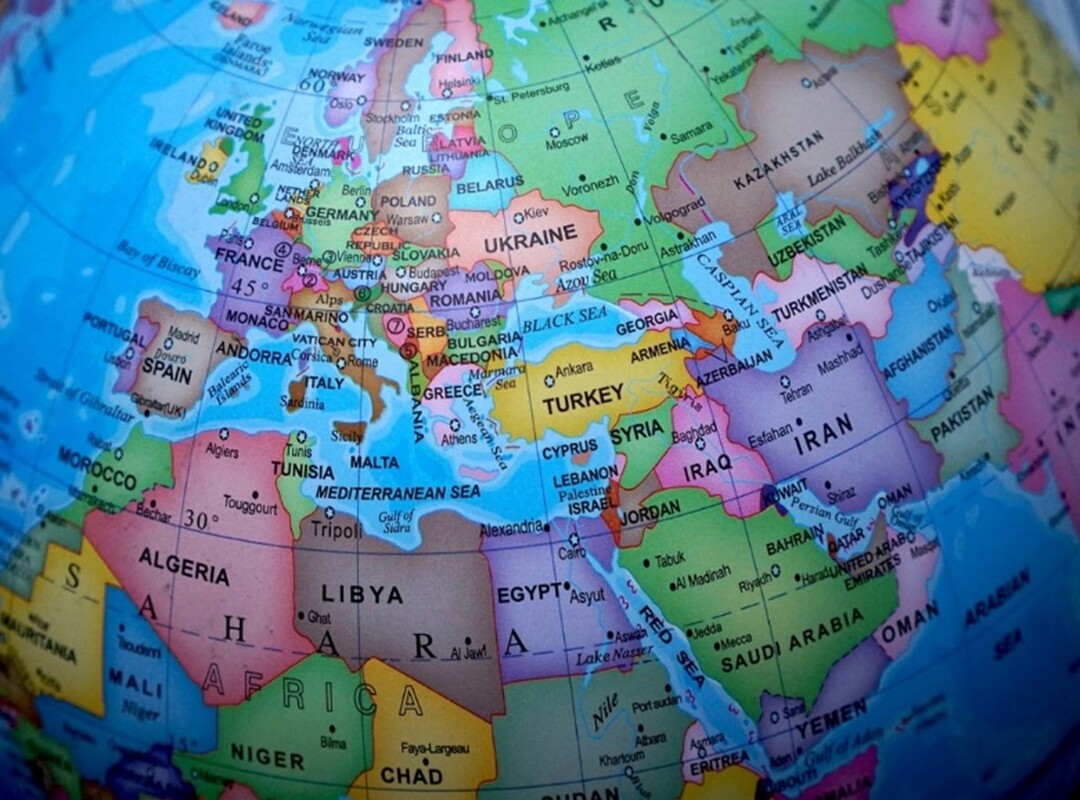

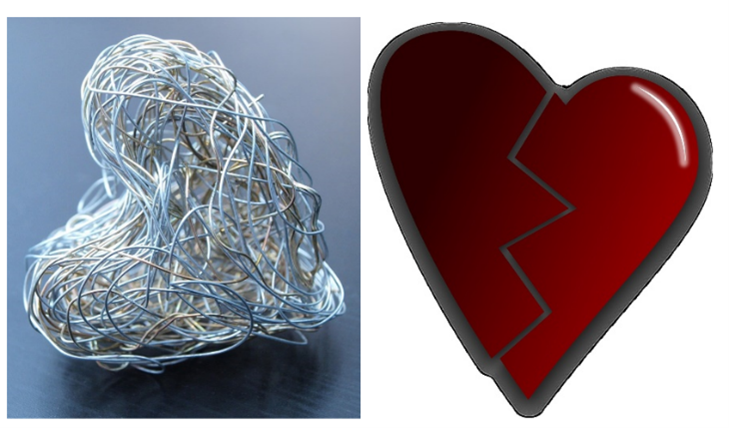
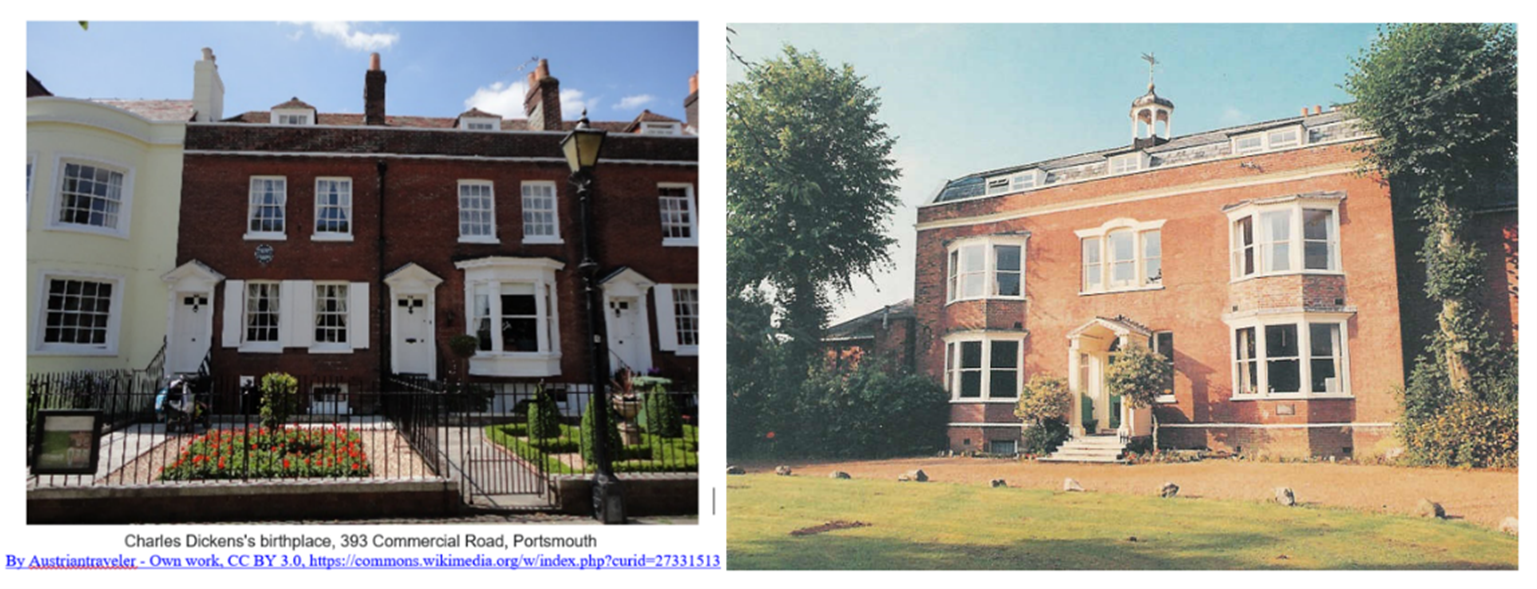
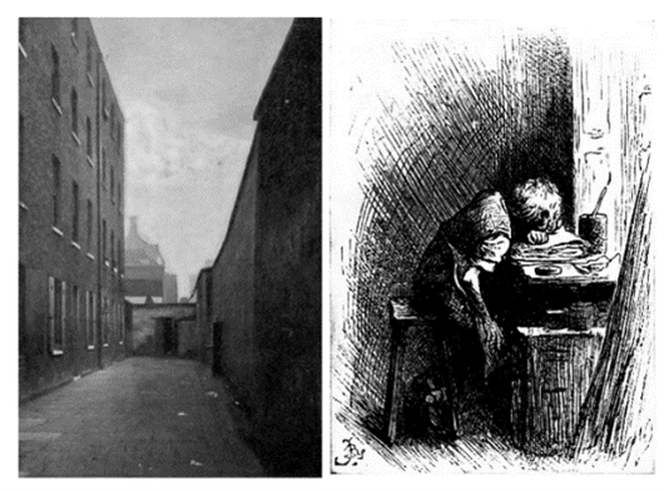
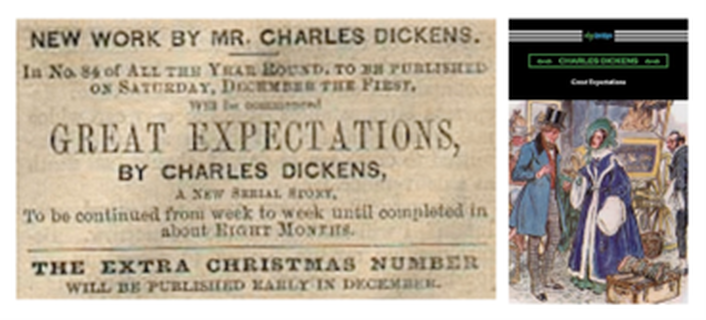
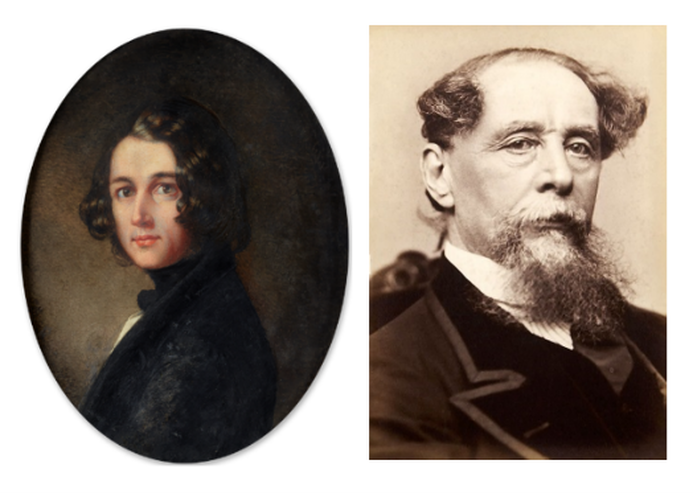
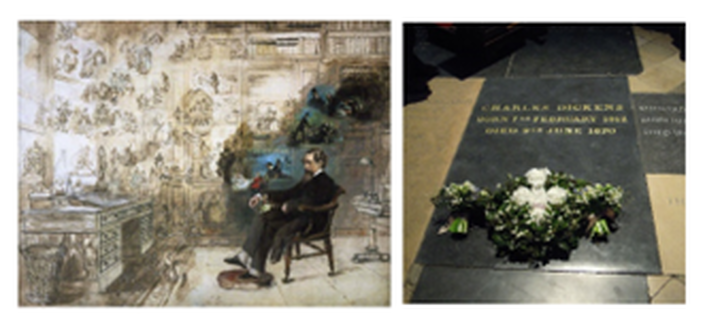

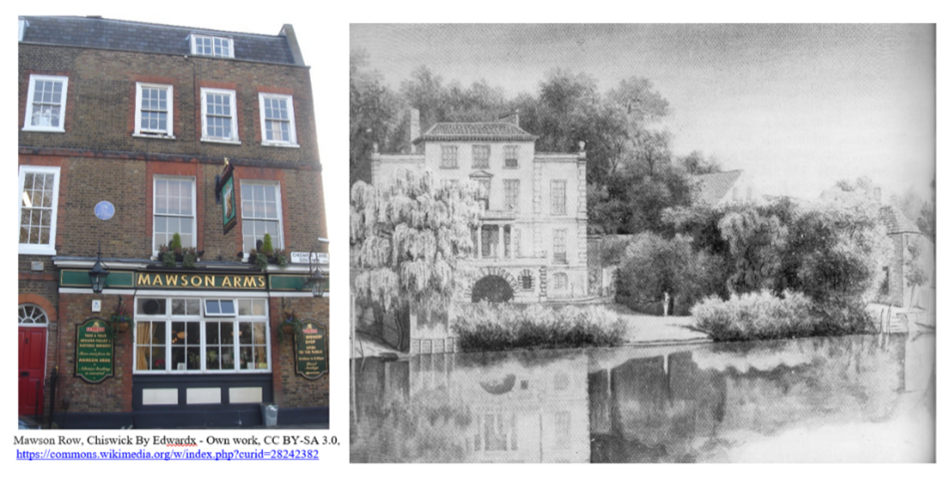
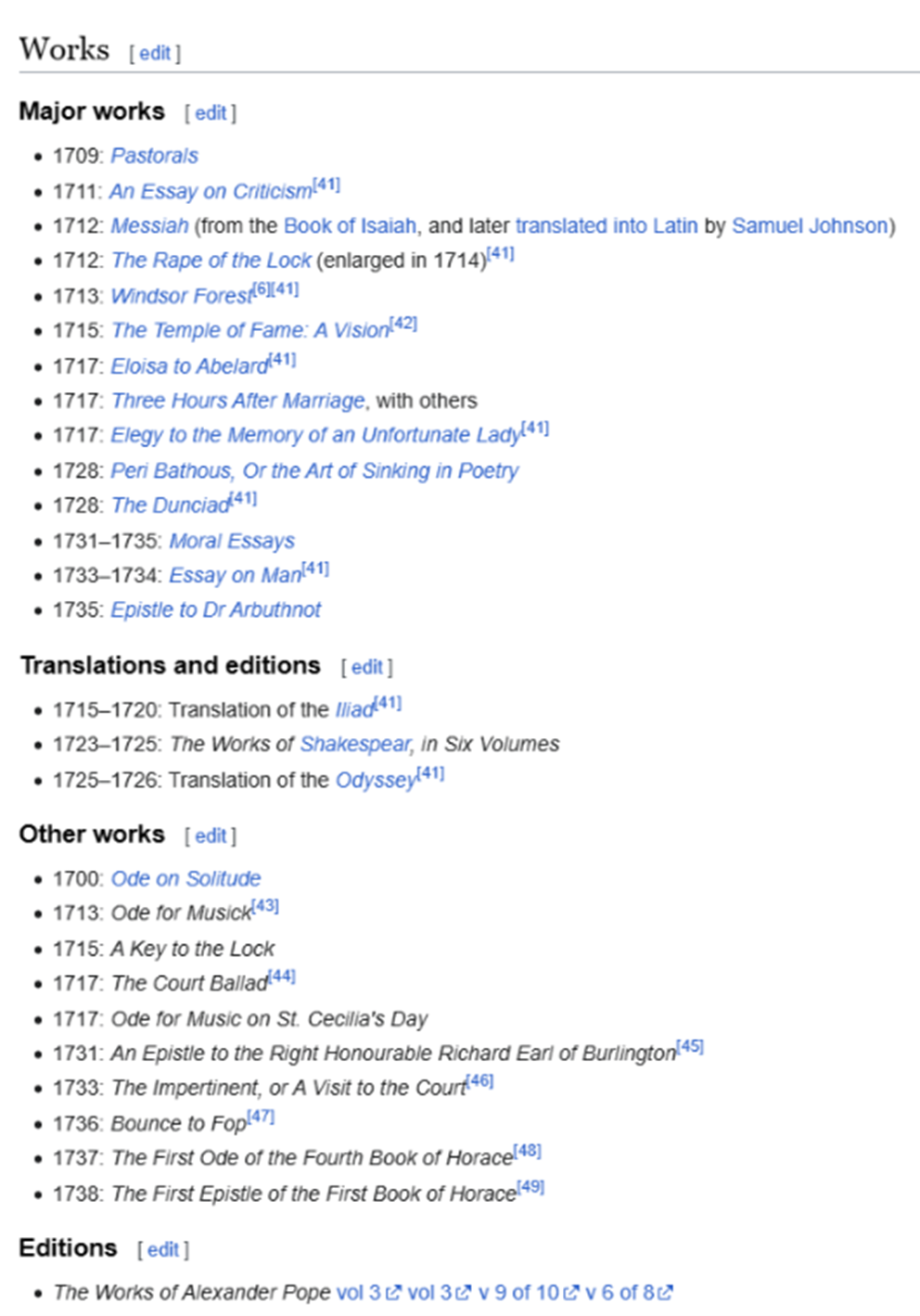
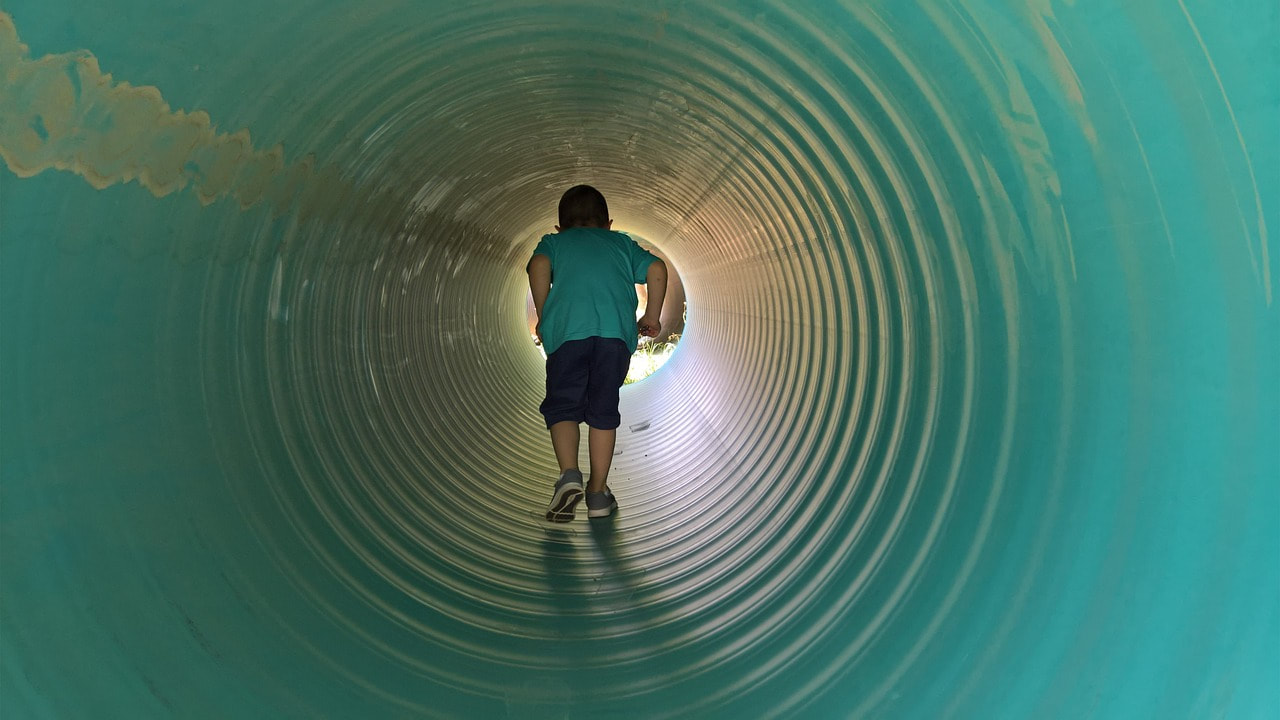
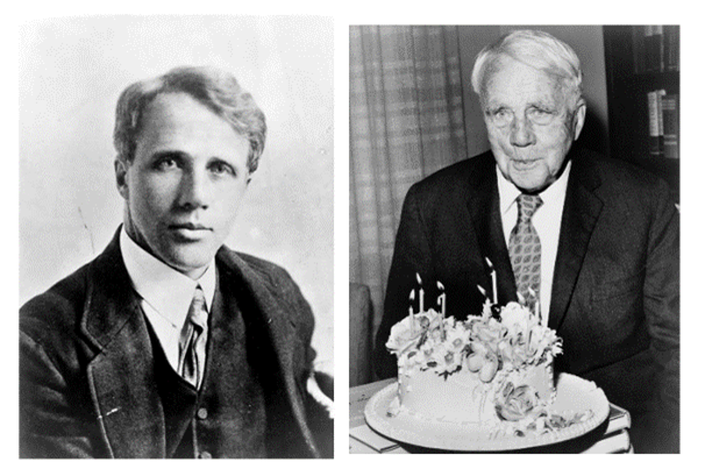
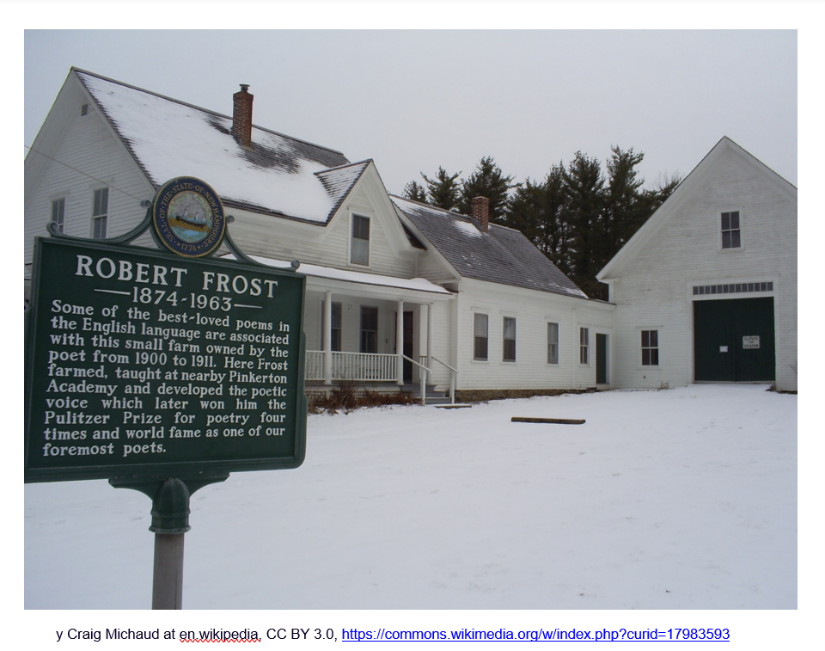
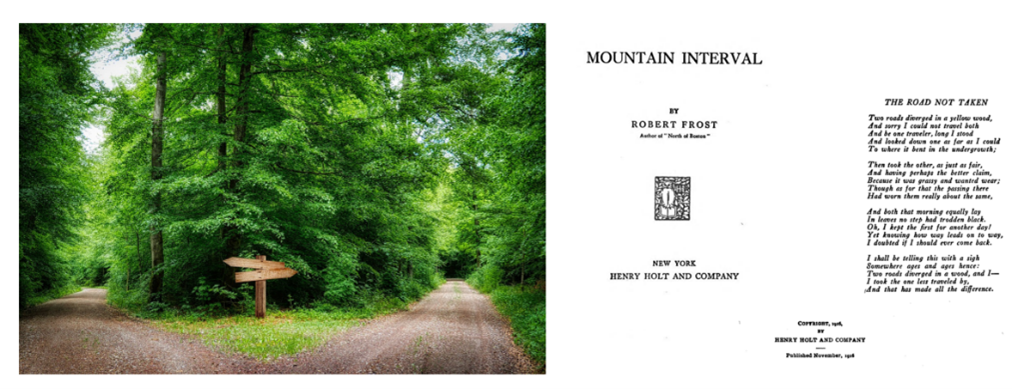
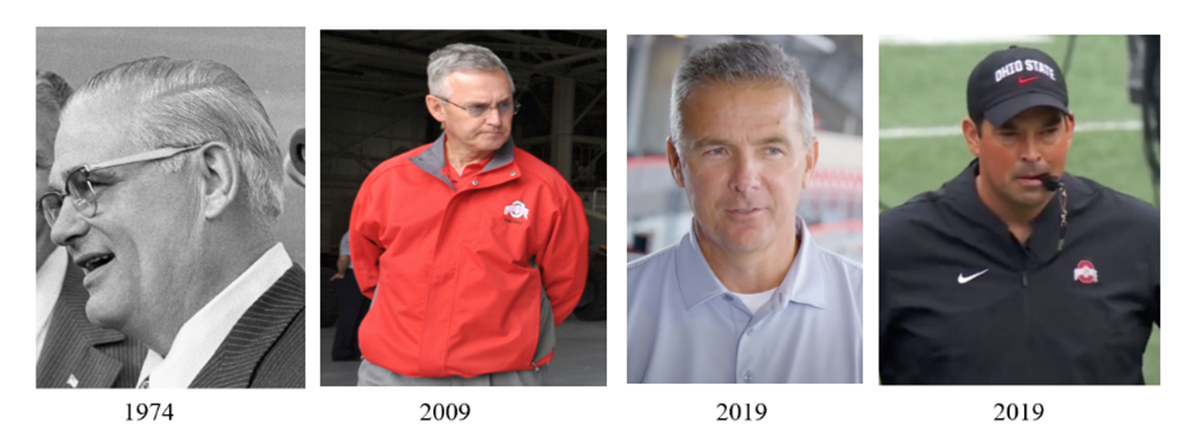
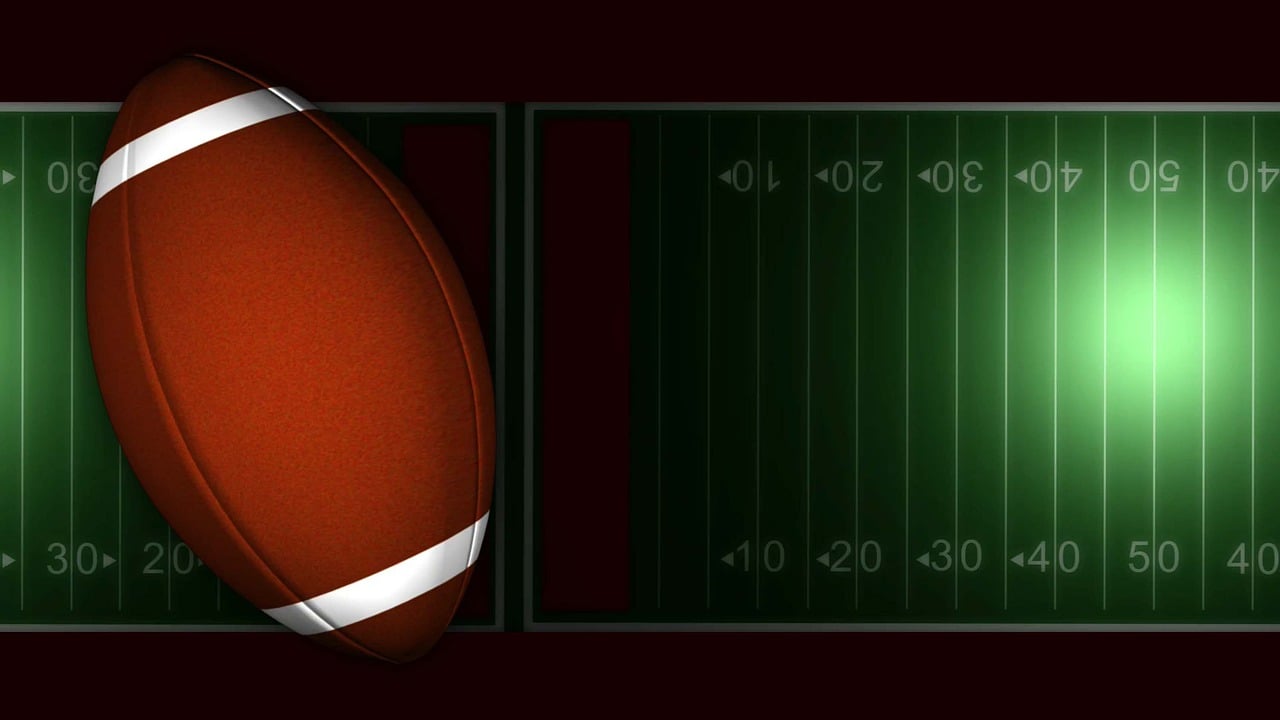
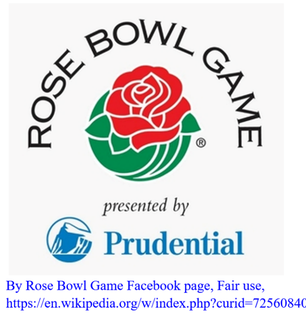
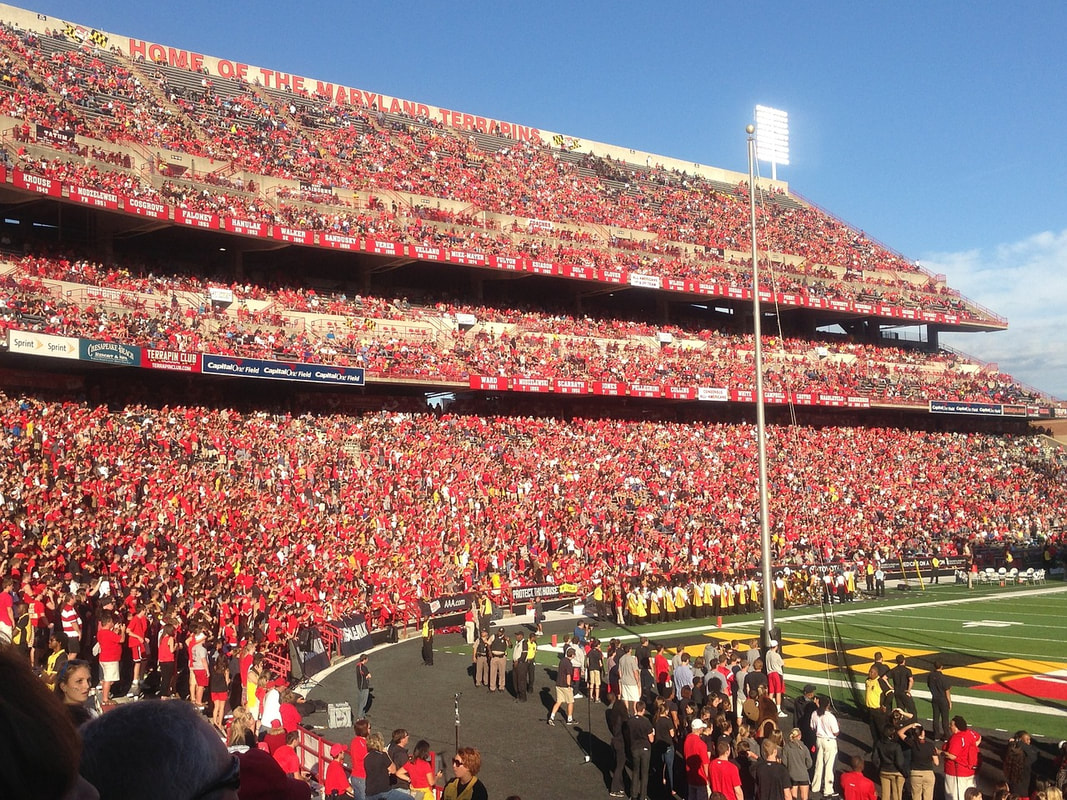
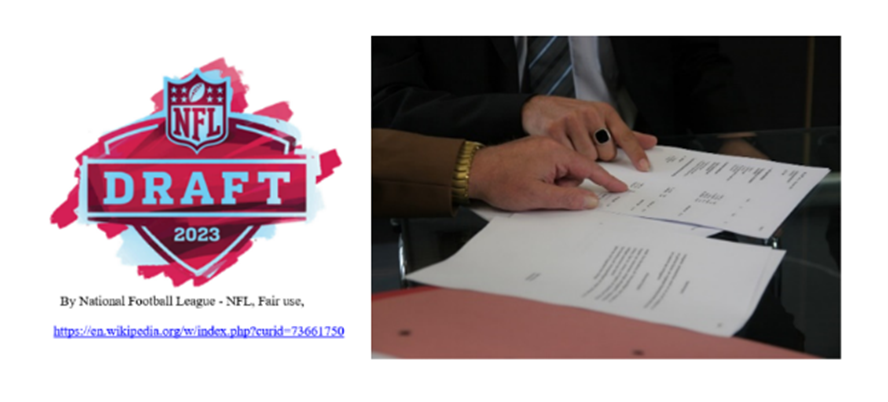
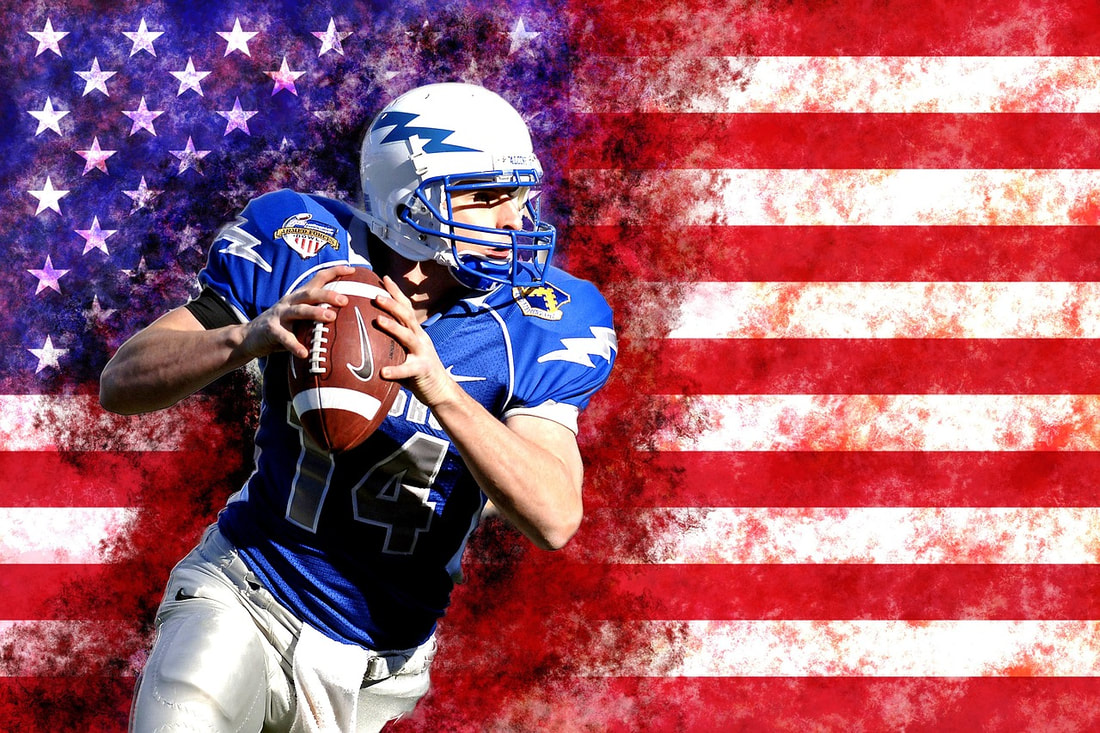


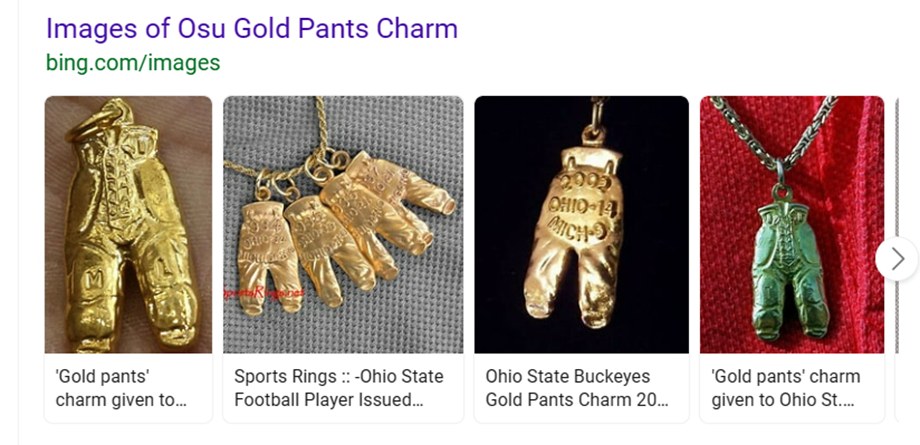
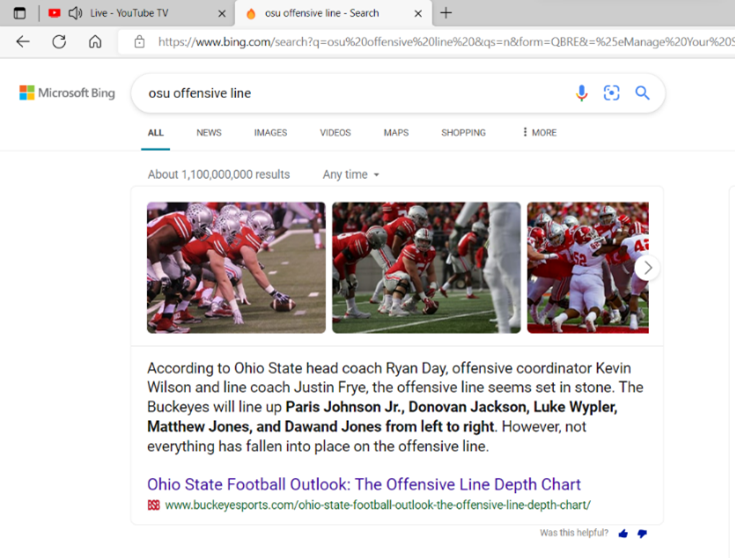
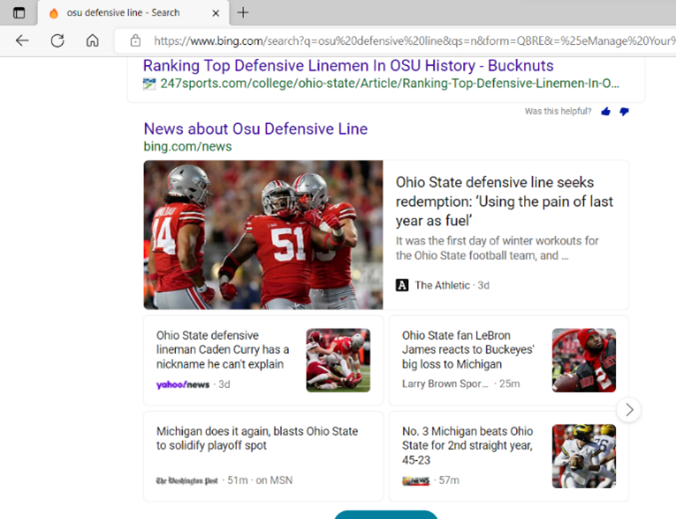

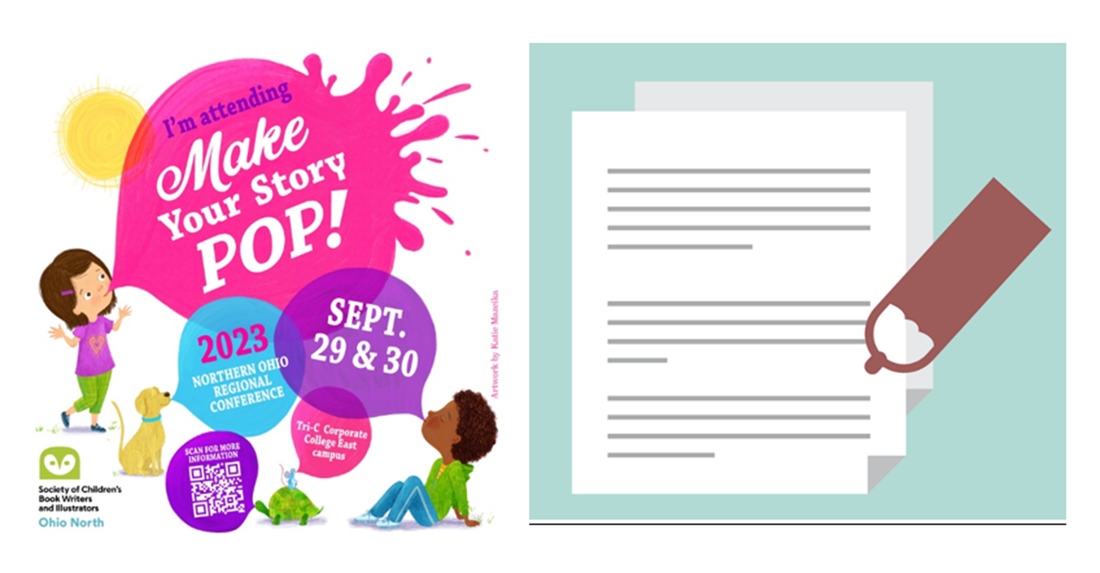
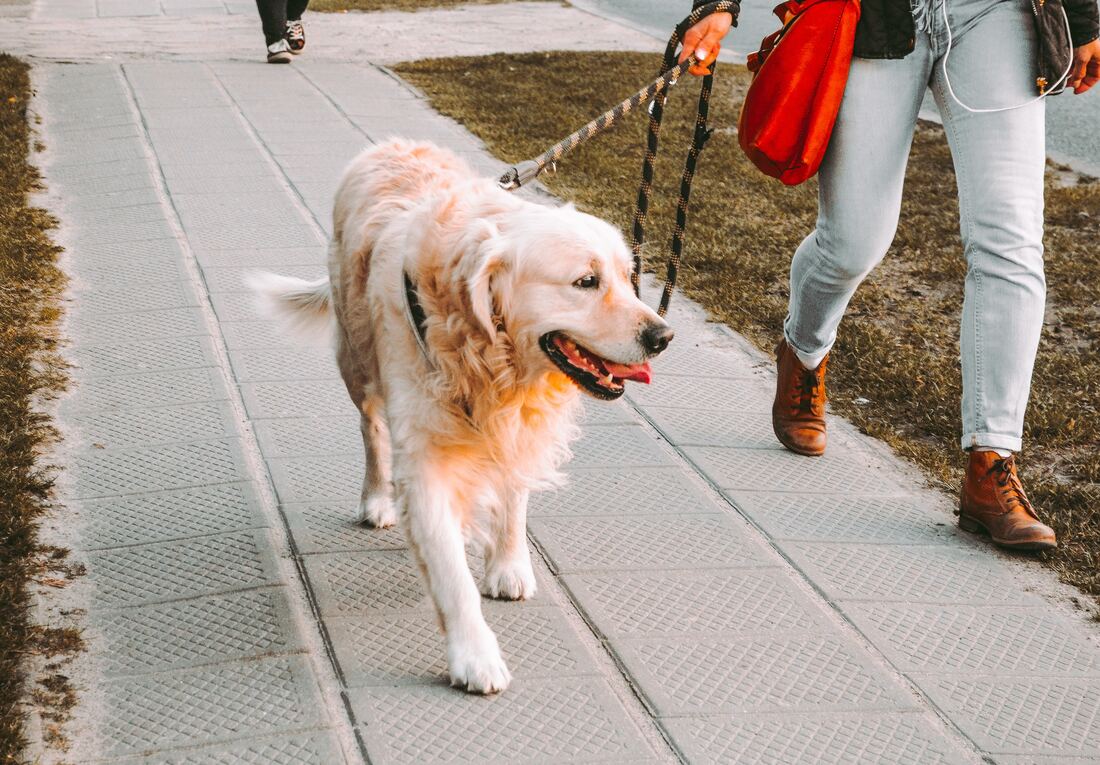
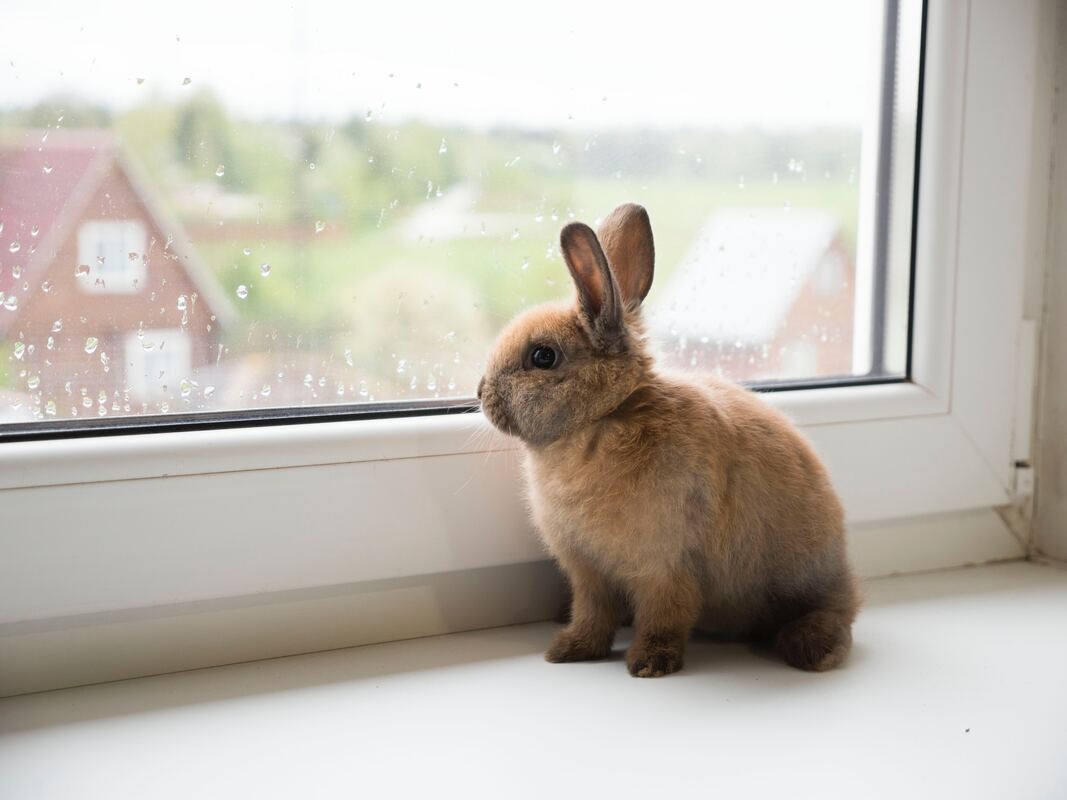
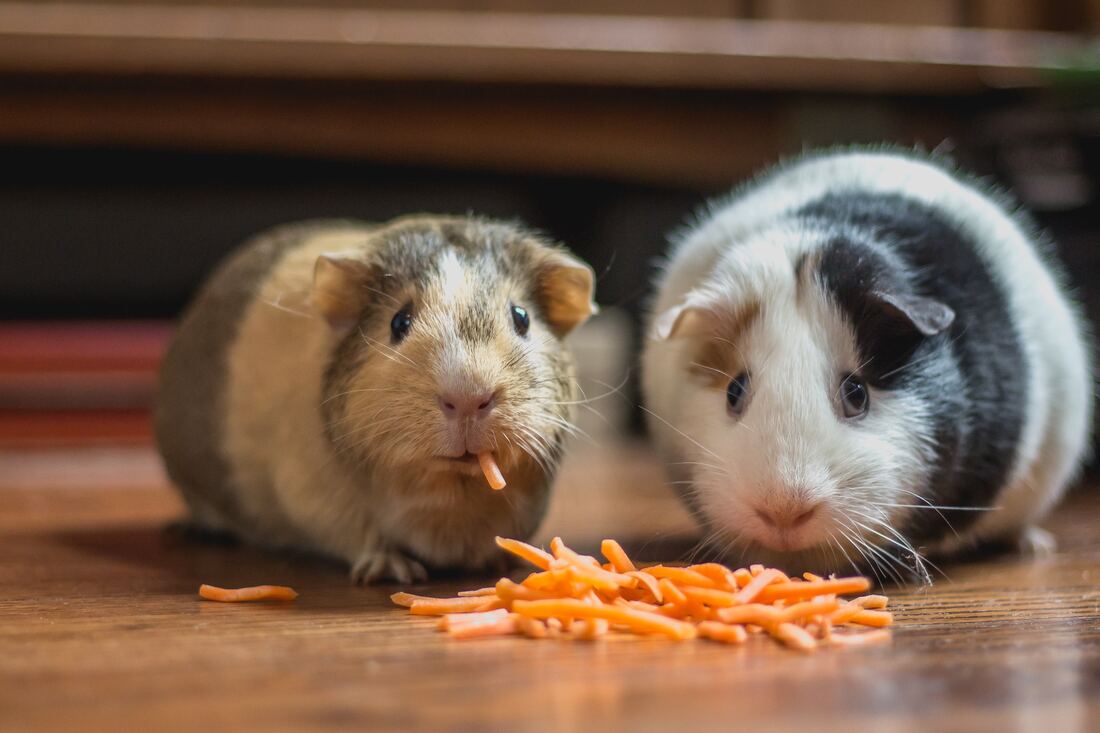
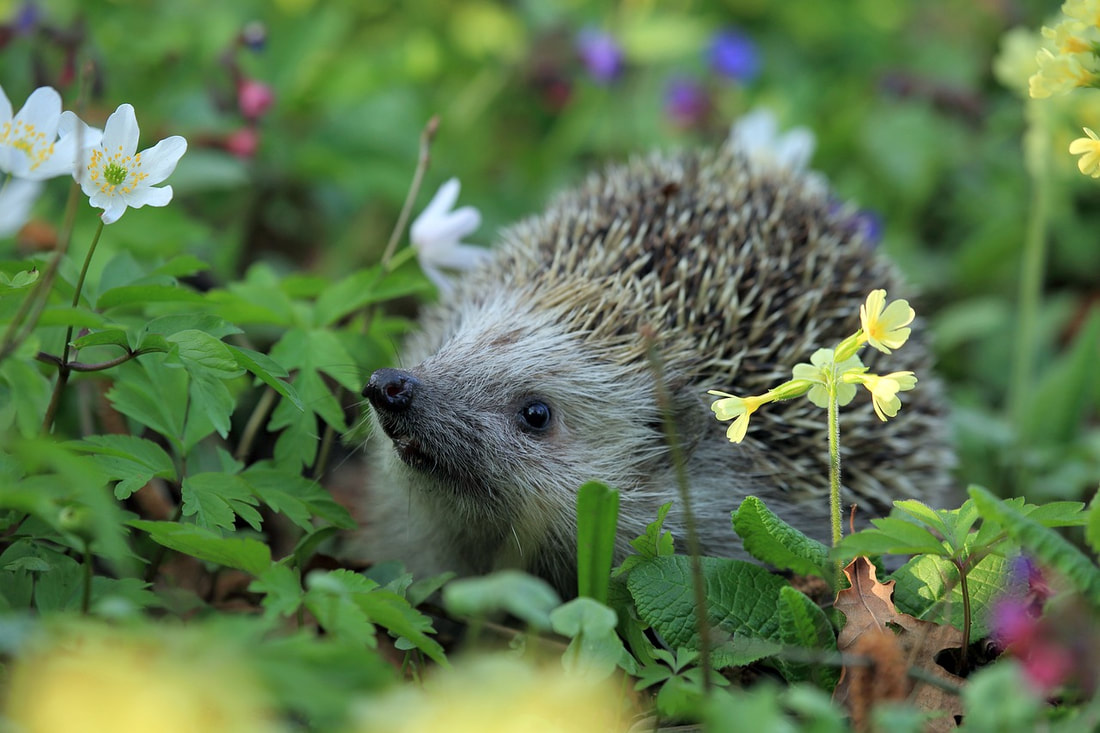
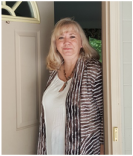
 RSS Feed
RSS Feed